










































30 stock exchanges, 24 currencies and 1 million products with the security of a bank.





















www.maisonmoderne.com
Phone: (+352) 20 70 70
E-mail: publishing@maisonmoderne.
com
Postal address: PO Box 728, L-2017 Luxembourg
Offices: 10 rue des Gaulois, Luxembourg-Bonnevoie
founder and ceo
Mike Koedinger coo
Etienne Velasti
Editorial
Phone: (+352) 20 70 70-150
E-mail: press@paperjam.lu
Mail : BP 728, L-2017 Luxembourg
publishing director Mike Koedinger
editor-in-chief paperjam
Thierry Labro (-105)
editor-in-chief delano Aaron Grunwald (-152)
assistant editor Lydia Linna (-165)
journalists
Sylvain Barrette (-153), Kangkan Halder (-150), Jeffrey Palms (-156)
photographers Eva Krins, Marie Russillo, Guy Wolff
Brand Studio
Phone: (+352) 20 70 70-300
E-mail: brandstudio
@maisonmoderne.com
business development director
Pierre-Alexis Quirin
head of markets & business
Florence Christmann
commercial assistant
Céline Bayle
studio manager
Sandrine Papadopoulos layout
Sophie Melai (coordination), Louna Simon, Guillaume Sinopoli, Marielle Voisin
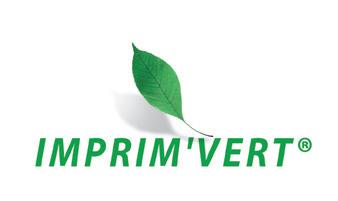
Have private asset funds turned a corner? Judging by fundraising figures, investors seem to think so. After peaking in 2021, overall fundraising troughed in the first quarter of 2023 and has been slowly-but-surely recovering in subsequent quarters. Globally, private market funds are thought to have raised $600bn during the first half of the year, according to data firm Pitchbook.
There are regional variations, however. All things being equal, Europe is on track for a 19% increase in fundraising this year compared to 2023, while North America is projected to see a 17% decline, Pitchbook said.
There also are variations between asset classes. On current trends, private equity and infrastructure funds are expected to raise significantly more in 2024 than last year, figures from data firm Preqin indicate. Real estate and private debt funds are expected to raise markedly less. What is driving the uplift? Investors are still seeking increased yields, which the private markets promise. There is lots of buzz around the new “Eltif” structure, with Luxembourg already taking the lead as the prime domicile, although the number of fund launches has remained relatively modest.
At the same time, private market fund managers are facing headwinds: ever-increasing scrutiny from investors over cost, performance and asset valuations. Not to mention pressure from policymakers over sustainability and transparency, seemingly perpetual recruitment and retention challenges, and corporate HQs clamping down on local operations’ budgets.
So, where does that leave the Luxembourg market? It’s always dangerous to give a crystal ball to a journalist, but I’ll give it a go. I’m not sure any of the headwinds will dissipate in 2025 and it will prove a tricky year for quite a few fund firms. Yet I’m optimistic that, for smart sailors, there will be plenty of clear skies and rays of sunshine.
Words AARON GRUNWALD

























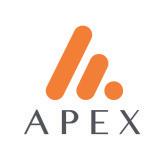
ALFI
22 REGULATION
Steven Pringle on ESG reporting frameworks
30 TECHNOLOGY
Shaun Lee on GenAI in private markets
36 GUEST CONTRIBUTION
Serge Weyland on the future of private asset funds in Luxembourg
LPEA
50 COMPLIANCE
Aïssata Coulibaly on ESG hurdles
60 INTERVIEW
Rajaa Mekouar on family offices & private equity
66 GUEST CONTRIBUTION
Stephane Pesch on private market funds in 2025
FUND ECOSYSTEM
70 EXCLUSIVE
Karine Pacary shares which Luxembourg fund service providers have the highest ‘affinity’ rates
78 GUEST CONTRIBUTION
Alan Dundon on what makes a great alternative fund service provider






With the investment fund services market consolidating in a drive to cut costs, there has been an increase in fund initiators looking for high-quality partners. Banque de Luxembourg Asset Servicing is backed by a wide range of experts based in Luxembourg, with the aim of o ering personalised support to help fund initiators take advantage of all the benefits that the Luxembourg financial centre has to o er.
The investment fund sector, like all other industries, is in a state of constant change as it seeks to meet investors’ expectations as effectively as possible.
Luxembourg is Europe’s leading domicile for collective asset management vehicles and has developed a vast ecosystem providing a range of services to fund initiators and other fund management professionals. Banque de Luxembourg Asset Servicing is part of this ecosystem and has been supporting asset managers for over 40 years and is consequently well placed to monitor these ongoing changes.
“In recent years, we have noticed a move towards consolidation in the asset servicing sector” Thomas Etienne, Senior Business Development Manager at Banque de Luxembourg Asset Servicing, explained. “We have also seen many market players relocate some of their activities. The main driver for these changes is a strategy to reduce the costs associated with the services being offered. However, this approach is reaching its limits. On a market-wide scale, these cost-cutting measures are leading to a decline in service quality and a deterioration in customer satisfaction.”
Banque de Luxembourg Asset Servicing is keen to promote its strengths more effectively through a comprehensive range of services, from custodian banking to brokerage and financing solutions, and to meet current market expectations within this context. “We’re finding that fund initiators are increasingly prioritising service quality.
€32 billion
The value of liquid assets entrusted to Banque de Luxembourg Asset Servicing.
€42 billion
The bank provides services to private assets valued at €42 billion.
€10 billion
The value of assets linked to services specific to external asset managers.
>1,080+
Banque de Luxembourg currently employs more than 1,080 people in Luxembourg, across all its departments.
Our aim is to offer tailor-made solutions to every customer.”
Nicole Thomé Head of Business Development at Banque de Luxembourg Asset Servicing
While costs remain a major concern, customers are also expecting their partners to be operationally reliable, responsive and available,” Thomas added.
“In this constantly changing environment, our customers are also placing increased importance on business model stability and a solid shareholder base in the partners they work with,” continued Nicole Thomé, Head of Business Development. “They want to avoid being exposed to excessively frequent changes that cause disruption to their operations. We are committed to ensuring our customers’ peace of mind over the long term, thanks to our stable shareholder base as part of the Crédit Mutuel group – one of the ten largest European banks.”
The Banque de Luxembourg Asset Servicing team will continue to offer all fund initiators the services they deserve, whatever their size. “While the market is moving towards greater standardisation, our aim is to offer tailor-made solutions to every customer, with support that caters to their specific characteristics,” Nicole added. To achieve this, the company has teams based exclusively in Luxembourg, who can provide coordinated responses to client’s requirements. This doesn’t mean that digitalization and automation options have been neglected.
BANQUE DE LUXEMBOURG ASSET SERVICING, OUR FIVE COMMITMENTS
Satisfaction
Banque de Luxembourg Asset Servicing has made customer satisfaction a priority, aiming to meet the needs of its stakeholders who place great emphasis on service quality.
Stability
The aim is to guarantee the greatest possible stability while taking into account market movements, thanks to a strong shareholder base and a long-term development approach.
Digitalisation
Banque de Luxembourg continues to invest in technology to improve operational workflows, manage data efficiently, strengthen risk management and provide relevant performance indicators.
Customisation
In response to the standardization of services and processes within the market, Banque de Luxembourg Asset Servicing aims to deliver personalized solutions to each of its customers.
People focus
To support its customers over the long term, the bank makes substantial investments in training its staff to develop the expertise required to deliver personalised customer service.
Customer centricity, combined with digital transformation, is essential for delivering a customer-focused experience while effectively managing costs.
Our teams keep a close eye on market developments. Banque de Luxembourg Asset Servicing offers services for all asset classes. “The liquid assets segment (UCITS) is now mature with associated services usually being automated. However, small and medium-sized players in this field are looking for partners who can support them individually with all the guidance they need,” Sofia Souici, Associate Business Development Manager, explained.
“On the other hand, the illiquid assets segment – including private equity, venture capital, real estate, infrastructure and private debt – has seen remarkable growth over the last decade. Customers investing in this segment need to work with partners who understand their specific challenges and are able to provide tailored, agile and responsive solutions, coupled with excellent communication.”
Making the most of Luxembourg
To support fund initiators, regardless of the types of vehicles they use, Banque de Luxembourg Asset Servicing has a joint team of relationship managers, covering both liquid and illiquid assets and guaranteeing a consistent and efficient approach for each.
Every customer is allocated a relationship manager, who is their main point of contact at the bank and will be able to develop in-depth knowledge of their needs.
Sources:
Fund initiators are increasingly prioritising service quality.”
Thomas Etienne Senior Business Development Manager at Banque
“Whether their queries relate to dayto-day operations, strategic decisions, or specialist topics, customers can rely on their relationship manager who will coordinate with our in-house experts to suggest the most appropriate solutions and enable the customer to seamlessly navigate their way through a complex financial environment,” Sofia added.
This means that everyone can be sure that they are taking full advantage of what Luxembourg has to offer as a prime location for setting up funds. “Our teams can help customers benefit from the robust regulatory framework offered by the Luxembourg financial centre. The authorities are responsive to changes and expectations in the market and keen to support business growth. They ensure that tools are developed to meet stakeholder expectations while guaranteeing investor protection,” Nicole Thomé told us. “Our expertise has been growing with the financial centre over the last 40 years. We are keen for our customers to take advantage of this unrivalled fund distribution platform.”
The Luxembourg financial centre is adapting alongside the rest of the industry, regularly adopting new tools, such as the recent improvements to RAIF – a vehicle dedicated to private assets – and backing the development of the ELTIF. “To support these changes, we are investing in both technology and people. Our top priority is the continuous
development of our colleagues through ongoing training, empowering them to serve our customers more effectively and leverage the latest technologies to deliver tailor-made services,” explained Sofia Souici.
In this way, technology is used to support customer relations so that everyone can enjoy the level of service they deserve from their banking partner.
Sofia Souici Associate Business Development Manager at Banque de Luxembourg Asset Servicing. “
Whether their queries relate to day-to-day operations, strategic decisions, or specialist topics, customers can rely on their relationship manager”

Luxembourg was a pioneer in implementing European fund regulation, helping to create a trusted environment for investors and asset managers alike, under the supervision of the CSSF – Luxembourg’s financial regulator. The financial centre has played a central role in opening up markets for international fund distribution and giving European private and institutional customers access to international investments.
Since the introduction of UCITS – regulated funds for private and institutional investors that spearheaded the development of the fund industry – Luxembourg has continued to expand its toolbox. By introducing new vehicles and adapting them over time, such as SIFs, SICARs, UCIs, RAIFs and ELTIFs, the aim is to provide a flexible and versatile response to the needs of international fund initiators.
Luxembourg’s success is primarily due to the development of strong expertise, consolidated over 40 years of development within the financial centre. The multilingual workforce can serve an international customer base and support fund initiators wherever they are, across all fund and asset types they manage.
Luxembourg is continuously striving to maintain its appeal. The challenge is to ensure that the financial centre remains competitive while upholding the highest quality standards. Recent initiatives, such as the abolition of the subscription tax on actively managed ETFs, demonstrate the country’s ongoing efforts to strengthen its position as one of Europe’s most competitive fund domiciles.
Luxembourg is a prime location for distributing investment products internationally, starting with the various member states of the European Union. However, Luxembourg’s product reputation extends far beyond the borders of Europe. Luxembourg-domiciled products are recognised in over 80 countries and Luxembourg is synonymous with trust.
The Luxembourg fund ecosystem is vast and diversified. Leveraging on its strong expertise, the country is looking towards the future, employing technology for more efficient management and distribution, particularly with the support of numerous fintechs. Luxembourg is also committed to adapting to the introduction of any new fund regime. For example, Luxembourg is leading the way in ELTIFs, the new investment products introduced by the European authorities. Luxembourg is home to around 70% of all European ELTIFs.
In this special section, Paperjam examines four topics that will be covered during the Association of the Luxembourg Fund Industry’s Private Assets Conference (25-26 September): circular 24/856 on investor protection, sustainability reporting, listing private asset funds and GenAI apps in private markets. Plus: Alfi CEO Serge Weyland shares his take on the importance of partnerships and technology.
Total assets under management in Luxembourg-domiciled private market funds have grown by a third over the past five years, while total AUM across all investment funds domiciled in the grand duchy have nearly doubled (+89%) over the past decade.
Words AARON GRUNWALD
Total assets in Luxembourg alternative investment funds grew by 34% in the five years to 31 March 2024, compared to 21% for Europe as a whole
Source Pitchbook
By total net assets, Luxembourg-domiciled investment funds, €bn
Source Luxembourg Financial Sector Supervisory Commission (CSSF)
European healthcare private equity deals
Source Pitchbook
Total for all Luxembourg-domiciled investment funds, at month end
Source Luxembourg Financial Sector Supervisory Commission (CSSF)
€6,000bn
€5,000bn
€4,000bn
€3,000bn
€2,000bn
€1,000bn 0
European funds marketshare by Sustainable Finance Disclosure Regulation classification, 30 June 2024
Source LSEG Lipper
Total
Source ETFGI
and
The success of your private equity fund and your investments is highly dependent on compliance with increasingly stringent and ever-changing legal and tax regulations.
Whether you are a private equity or venture capital fund manager, a professional investor or a high-net-worth entrepreneur, you can rely on us to understand your needs and provide you with innovative solutions to reach your ambitions.

“ The update is renewing Luxembourg’s quality standards ”
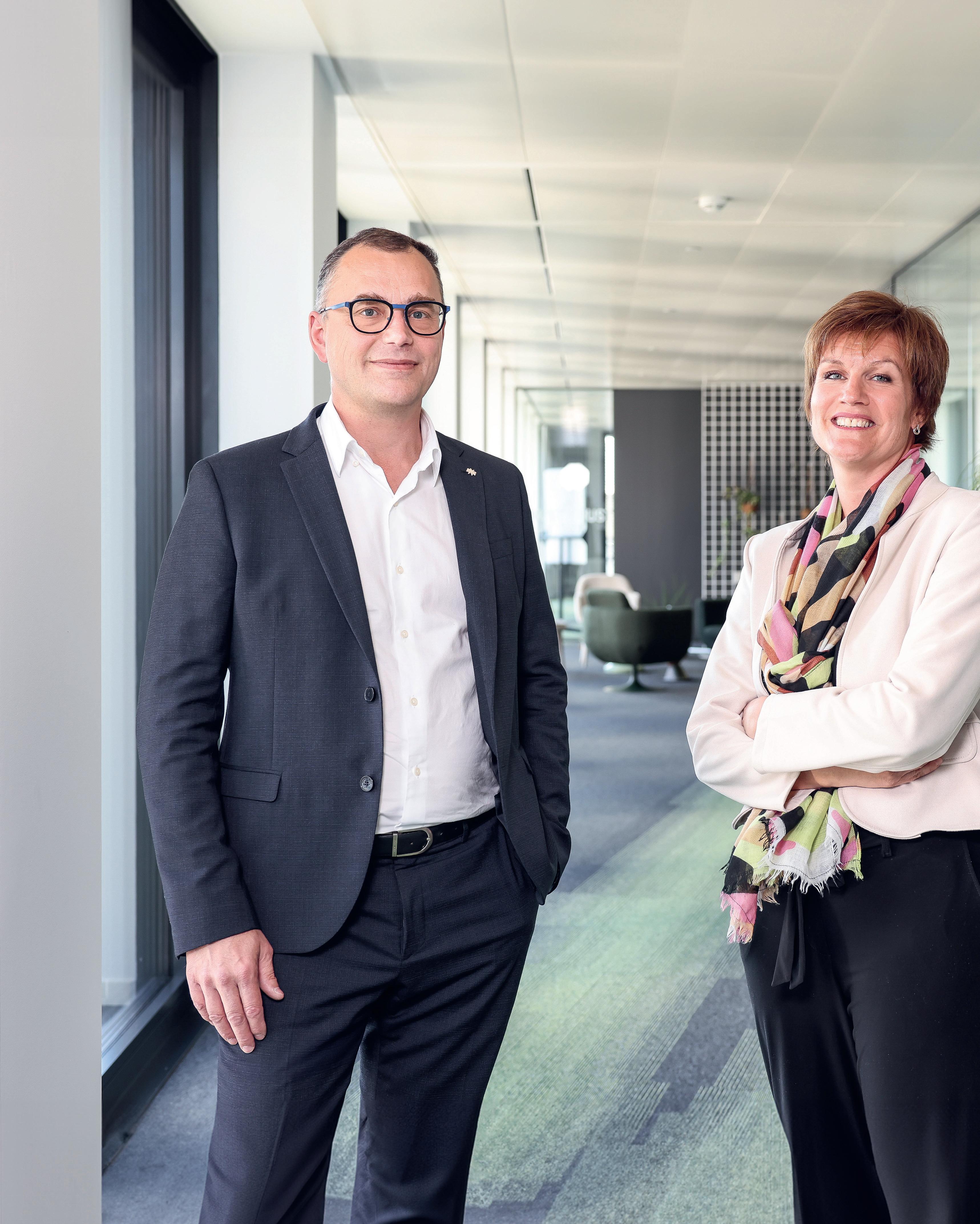

Séverine Kettels, head of depositary & fiduciary services, and Raphaël Machet, head of regulatory projects and digital assets practice at BNP Paribas Luxembourg, told Paperjam about circular 24/856 on fund investor protection. It’s a sign, they say, that Luxembourg is adapting its regulatory framework to accommodate newer fund types.
The Luxembourg Financial Sector Supervisory Commission (CSSF) on 29 March 2024 published circular 24/856 on “protection of investors in case of an NAV calculation error, an instance of non-compliance with the investment rules and other errors at UCI level.” This first question might seem a bit simple, but could you explain exactly how NAV calculation works, how a NAV calculation error is defined and why it could have an impact on investor protection?
NAV (net asset value) calculation has an immediate impact on investors as it involves determining the value of a fund’s assets minus its liabilities, divided by the number of shares. This figure is critical, as it directly influences the share price that investors use for subscribing and redeeming in a fund.
The new circular 24/856 specifies that a NAV error occurs when the result of the NAV calculation is incorrect, due to one or several factors amongst other: human error, issue with internal controls, failure in IT accounting, or communication systems and processes. In addition, investment breaches, which are cases of non-compliance with regard to a fund’s investment limit, are also considered as errors.
These errors cause failure to comply with the accounting and valuation rules established by law and/or the fund’s prospectus.
To ensure that investors can enter and exit the fund daily, the NAV calculation must be conducted in a professional and fair manner for all investors. If an error occurs, a procedure for NAV errors (section 4) must exist to correct the error, which may imply the compensation of affected investors including the funds, depending on the materiality criteria. It is important to note that the ultimate responsibility for errors, according to the new circular, lies with the management entities (including boards of directors).
What are some other possible errors that may occur? How can these calculation errors be avoided or addressed? In addition to NAV errors, there are the four types of errors specified in the section 6 of the circular, regardless of mate-
“ Circular 24/856 is designed to be more adaptable to the contemporary fund industry “
riality, which are applicable to open-ended and closed-ended funds: incorrect application of swing pricing, payment of undue fees at the UCI level, incorrect application of cut-off rules, and wrong allocation of investments at the UCI, sub-fund, or share class level.
To prevent these NAV computation errors, a robust operational control framework, as well as strong data and modern IT infrastructure, have to be in place.
It is also our understanding that this circular is a call for the actors to adopt advanced technology platforms. BNP Paribas’ Securities Services business invested, as fund administrator in 2022/23, in a new system of workflow and execution management (WEM\Temenos) to enhance its global NAV accounting and control framework, and implemented in parallel, as fund depositary, an independent NAV review process leveraging on a Next Gate Tech tool. It goes without saying that both fintechs are Luxembourg-based.
Finally, let’s not forget our human expertise and competencies in both domains--fund administration and depositary bank--which are a key success factor to anticipate and avoid NAV errors and underlying investor impacts on the fund administrator side as well as to ensure funds are properly managed on the depositary side.
Circular 24/856 repealed circular 02/77 on the protection of investors in case of NAV calculation error, which was published in November 2002. Can you tell me what the main elements of this initial circular were?
One of the key elements of circular 02/77 was its significant contribution to setting the quality standard for the Luxembourg fund industry. It established a high level of rigour, ensuring that Ucits funds and actors
In addition to NAV errors, there are four types of errors specified in the circular, explain Séverine Kettels and Raphaël Machet. These are: “incorrect application of swing pricing, payment of undue fees at the UCI level, incorrect application of cut-off rules, and wrong allocation of investments at the UCI, sub-fund, or share class level.”
supervised by the CSSF adhered to the highest standards of NAV calculation and compliance with investment rules. This level of precision and commitment was crucial in making Luxembourg one of the largest fund administration hubs globally, as it reinforced confidence in the market for fund promoters and investors worldwide.
In addition, the circular emphasised the importance of investor protection with the indemnification of affected investors in case of error. We consider this has been a key factor in building Luxembourg’s reputation as a trustworthy and reliable financial centre for investment funds.
The rules in circular 02/77 was therefore used for a little over 20 years. Is this “lifetime” common? How long do CSSF circulars usually last?
Circular lifetimes can vary, and in the case of circular 02/77, its 20-year duration is quite remarkable. This circular is uniquely Luxembourgish, as it wasn’t based on any specific EU legislation. It was created as a way to distinguish Luxembourg and raise the quality standards for the fund industry.
The fact that it lasted for such a long period and is only now being updated reflects Luxembourg’s commitment to continuously improving these standards in line with recent market developments, such as the growth of Sifs and Eltifs, and the significant expansion of the alternative investment space.
Finally, the circular’s evolution shows the regulator’s willingness to widely share applicable principles by regrouping the main aspects in one single document, which in addition formally clarifies the range of funds in scope. The update is renewing Luxembourg’s quality standards, in continuity with the long-standing quality demand on the marketplace.
Why was it time to update the circular?
The financial landscape has changed significantly since 2002--mancos did not exist in 2002, nor products like Sif--and saw the rise of alternative investment funds, the increasing use of complex investment strategies and techniques and growing expectations of investors around transparency. These developments, new fund vehicles and actors, along with the
regulatory changes at the European level, such as Ucits V and AIFMD, have prompted the need for a more comprehensive framework, addressing modern risks and ensuring greater investor protection. Circular 24/856 is designed to be more adaptable to the contemporary fund industry.
Included in the scope are European long-term investment funds (Eltifs), which have leapt into the spotlight these past few years. Is the updated circular partly in response to the rise of the Eltif and other alternative funds? The first circular greatly contributed to the success of Ucits by enhancing the quality and setting high standards, which helped build Luxembourg’s strong reputation worldwide. The updated circular extends these high standards to alternative funds supervised by the CSSF, including Eltifs. It shows that Luxembourg is adapting its regulatory framework and standard of quality to accommodate newer fund types that have become increasingly important in Luxembourg.
Circular 02/77 came to 12 pages; circular 24/856 is nearly four times as long and counts 47 pages. What would you say are the main changes in the new and revamped circular? How are these meant to protect investors? Circular CSSF 02/77 was concise in its description of errors, and several market practices had developed and were adopted by the participants. The new circular is significantly more comprehensive than the initial one and provides clear guidelines for correcting NAVs (errors or investment breaches), minimising disruption, compensating investors and protecting their interests. There is a strong emphasis on roles and responsibilities, internal control mechanisms, periodic reviews of valuation processes and enhanced reporting obligations to the CSSF in case of material error. This increase reflects the significant evolution of market practices and require-
€5.619trn
“As at 31 July 2024, the total net assets of undertakings for collective investment, comprising UCIs subject to the 2010 Law, specialised investment funds and Sicars,” amounted to €5.619trn, said the CSSF.
ments. Bringing all these elements together in a single document demonstrates the maturity of Luxembourg’s financial sector. For foreign players entering the market, it adds a layer of certainty and clarity. In addition, the new circular is applicable to a wider range of funds, including alternative funds.
And last but not least, it places a clear focus on the responsibilities of all stakeholders, starting with the board, management company and delegates. This underlines the importance of clearly documenting the roles and responsibilities of all involved parties in delegated relationships, ensuring proper oversight.
We view this as an important step forward, aiming to ensure a consistent and clear approach on supervised funds, that errors are detected early, corrected efficiently, and that investor compensation processes are more transparent and standardised.
How do you anticipate the new circular to impact private market fund firms and the Luxembourg marketplace?
In the private equity space, we can still see more diversity in operational models compared to Ucits, and this circular aims to bring greater clarity and standardisation.
In section 6, the rules around the management of fees now also apply to these types of funds, ensuring consistency across the board. The most significant impact, however, is in section 3, which addresses the roles and responsibilities of key stakeholders.
Ultimately, the circular can also strengthen Luxembourg’s reputation as a leading hub for sustainable and well-regulated fund management, which is crucial for maintaining its competitive edge in the global market.
The new rules will come into force starting 1 January 2025. What is important to keep in mind as we approach this date?
Fund administrators need to ensure that their internal systems, processes and governance frameworks are fully aligned with the upcoming requirements before the implementation date. This may involve updating NAV calculation procedures, enhancing internal controls and providing
extensive training to staff on the new rules. Boards and management companies must ensure a collaboration amongst experts, advisors (legal and audit) and delegates to ensure a seamless transition.
More generally, it’s crucial to identify areas that need adjustments (including in contractual documentation or oversight) to prevent any last-minute rush to meet the requirements. Every entity must evaluate its preparedness in implementing the new circular to ensure they are ready by the deadline.
Is there anything else important to know about circular 24/856?
The increased focus on fund protection, NAV calculation processes and error handling ensures the long-term protection of investors and reinforces the integrity and attractivity of the Luxembourg market.
This circular updates Luxembourg’s regulatory framework and indirectly reflects a growing emphasis on responsible asset management. Given the significance of the changes, it’s crucial to ensure that all stakeholders are aligned on key items like materiality thresholds and procedure for NAV errors.
It’s more than ever important to be supported by key stakeholders that are able to follow current regular evolutions, invest in robust and new technology as well as having the adequate business experts servicing you.
27 November 2002
The CSSF publishes circular 02/77. In the text, the regulator writes that the circular sets out “the minimum rules of conduct to be followed by collective investment professionals in Luxembourg in case of errors in the administration or management of the undertakings for collective investment (UCIs) for which they are responsible.” It replaces and supersedes CSSF circular 2000/8 of 15 March 2000.
29 March 2024
“Following the regulatory changes since the issue of circular CSSF 02/77 as well as the developments in the supervision of UCIs by the CSSF and in the industry practices,” writes the CSSF in its introduction to the text of circular 24/856, “this circular seeks to specify its scope of application and to provide more details with regard to the guidelines to be followed in case of NAV calculation errors and instances of non-compliance with the investment rules.”
“It is the responsibility of the UCI dirigeants, investment fund managers and those involved in the functioning and control of UCIs to ensure that any errors covered by this circular are treated in accordance with the guidelines of this circular,” states the CSSF. “Compliance with these guidelines is important in order to protect the interests of UCIs and/or aggrieved investors and to maintain the trust of investors in collective management in general and of professionals carrying out their operations in Luxembourg in particular.”
1 January 2025
Circular 24/856 will enter into force with effect from 1 January 2025, notes the CSSF. “UCIs must apply the guidelines of this circular to any error/ non-compliance detected as from 1 January 2025.”



We understand your needs, your investment projects and your clients. We support your operations and your growth with our specialised and tailored services for all types of investment structures.

www.efa.eu/private-assets
As 2025 approaches, private market funds are set to face intensified sustainability reporting challenges due to the implementation of stricter regulations like the EU’s SFDR and CSRD. The complexities of asset-level data collection, aggregation and meeting principal adverse impact disclosures will push funds to overhaul their ESG strategies to remain compliant, says GRESB’s Steven Pringle.
“ For most organisations, a targeted approach is a good approach ”













he established the member relations division. Pringle says that GRESB has continued to set industry standards, offering critical insights and benchmarks that are integral to shaping sustainable investment strategies worldwide.






















Established in 2009, Amsterdam-headquartered GRESB has emerged as the market leader in environmental, social and governance (ESG) data and benchmarking for real estate and infrastructure investments. The data organisation reviews over 2,000 real estate portfolios and 150 infrastructure funds, collectively representing $8.8trn in gross asset value as of the end of 2023. Given this scale, the insights of Steven Pringle, director of member relations, hold signi cant weight as private market funds prepare for the challenges of 2025. Pringle spoke to Paperjam about the growing complexity of ESG disclosures, highlighting the challenge of balancing comprehensive sustainability reporting with the risk of disclosure fatigue among stakeholders. With a career spanning over a decade in real estate fund management and banking, Pringle joined GRESB in 2021, where


To understand the future, it’s always good to start with the present, says Pringle, highlighting GRESB’s commitment to aligning with existing ESG reporting frameworks. He points out that GRESB had already mapped its real estate and infrastructure assessments against key frameworks such as the integrated reporting framework (IR), carbon disclosure project (CDP), sustainability accounting standards board (SASB), global reporting initiative (GRI) and principles for responsible investment (PRI), ensuring that their assessments are compatible with these widely recognised
standards. This groundwork, he says, positions GRESB and its members to look ahead to upcoming regulations.
One of the significant developments is the introduction of the Sustainable Finance Disclosure Regulation in Europe, Pringle emphasises. “SFDR targets European financial market participants and requires that they disclose a variety of key ESG metrics relating to the financial products that they offer.” The aim is clear-enhance market transparency and funnel capital towards more sustainable investments, Pringle states. To meet these new demands, GRESB has equipped its members with tools to craft their principal adverse impact (PAI) statements, aligning them with SFDR requirements. This was a critical step when SFDR first came into play, Pringle remarks, underscoring the proactive approach GRESB takes in supporting its members.
Turning to the Corporate Sustainability Reporting Directive, Pringle comments that it has far-reaching implications. “CSRD is the new face of sustainability reporting in Europe with over 50,000 EU companies now required to report on a variety of ESG metrics in accordance with its corresponding European sustainability reporting standards.” He claims that GRESB’s assessments help organisations seamlessly integrate ESG reporting into their operations, effectively preparing them for the stringent requirements of CSRD. “Participating in the GRESB assessments helps organisations to better integrate their ESG reporting with CSRD, because participation in GRESB provides a framework through which a fund can enhance its ESG practices through the adoption of ESG policies, governance, management, evidence and implementation,” Pringle says, stressing the importance of having robust systems in place well before these regulations come into force.
Pringle also takes stock of the international financial reporting standards (IFRS), stating that GRESB is intrinsically linked to these global standards. “The IFRS Foundations’ International Sustainability Standards Board launched IFRS S1 & S2, providing a global framework for sustainability and climate disclosures,” he notes. “ To date, over 20 jurisdictions,
comprising 55% of global GDP, have taken steps to adopt these standards into their national laws.”
“The GRESB real estate assessment helps set participants up for their IFRS S2 disclosure because the GRESB real estate assessment forms the basis upon which the IFRS’ industry-based metrics for real estate have been modelled.” This, Pringle argues, is a testament to GRESB’s pivotal role in shaping global ESG reporting standards.
Discussing the impact of these regulations on private market funds, Pringle doesn’t shy away from acknowledging the challenges. “Private market funds in Europe, or even overseas funds that are marketed in Europe, will likely fall within scope of the SFDR and will need to disclose the principal adverse impacts of their financial products.” He highlights the difficulties related to asset-level data collection and the need for comprehensive aggregation to meet the demands of regulatory bodies. This can be a daunting task, Pringle admits, but “participating in GRESB helps organisations structure their data collection and reporting processes in a way that aligns with the needs of SFDR and other regulatory requirements.”
Pringle also touches on the broader implications of the CSRD, noting that even private market funds that are not listed could be subject to its requirements if they meet certain thresholds. “Having a solid set of ESG practices and data collection procedures will help them enormously in preparing for such a complex regulation,” he advises, emphasising the need for early preparation.
He doesn’t hesitate to delve into the intricacies of data collection, describing it as an “arduous task” but necessary. Pringle elaborates on the complexities fund managers face when gathering data. “This can be particularly challenging for fund managers who must collect data from thousands of underlying assets as well as for investors who must engage with a multitude of funds to gain access to the data needed for their regulatory reporting.
50,000
Over 50,000 EU companies are now required to report on a variety of ESG metrics, including those under the CSRD, in accordance with the corresponding European sustainability reporting standards, says GRESB's Steven Pringle.
Moreover, this data needs to be aggregated from the asset-level to the portfolio level.” He warns of the risks posed by gaps in data coverage, which could lead to inaccurate reporting and ultimately undermine the quality of disclosures.
To mitigate these risks, Pringle introduces the GRESB estimation model, a tool designed to bridge data gaps by leveraging a global database of approximately 170,000 assets. According to Pringle, the model provides an accurate estimation of a real estate portfolio’s GHG emissions, ensuring that data coverage is as complete as possible.
When asked about the role of technological advancements, Pringle is optimistic about their potential to transform sustainability reporting. “ Large language models and other advanced technology are certainly playing a role in tackling the challenges of sustainable reporting.” However, he is quick to point out that the real insights on how these tools are being utilised would come from the fund managers themselves. They are “in the best
Net-zero target in real estate sector
In 2023, 72% of the more than 2,000 real estate participants in a global GRESB survey, representing $7.2trn in gross asset value, implemented a net-zero policy. In Oceania, 93% reported having such a policy, followed by 78% in Asia and 77% in Europe. Despite this progress, only 56% of global participants have made a public net-zero commitment, and just 50% have set a net-zero target.
position to address how these tools are being used,” Pringle says, leaving the door open for future developments in this space.
Looking ahead, Pringle sees the need for greater transparency and comparability in sustainability reporting, especially for private market funds. “Following a standardised ESG framework like GRESB is key,” he asserts. “This approach not only enhances the quality of disclosures but also aligns them with investor expectations and regulatory requirements.”
Social and governance factors often present more subjective challenges compared to environmental metrics. Pringle highlights how GRESB addresses these issues through its assessments, which are governed by the independent GRESB Foundation. The organisation collaborates with industry representatives to identify the most material social and governance issues. “This approach means that every participating entity is collecting the same sort of social and governance data, making comparisons of what are often seen as subjective metrics more consistent and meaningful,” argues Pringle.
working with a sustainability reporting partner organisation.”
He predicts that standards might evolve further, leading to even stricter authentication requirements in the future. “Verification of data will increase the quality of sustainability data, and GRESB is starting to reward the ability to verify or assure ESG performance data in its assessments, which is an ongoing process.”
Finally, Pringle addresses the issue of disclosure fatigue, a growing concern as sustainability reporting becomes more comprehensive. “A targeted approach is a good approach ,” he advises, suggesting that organisations focus their reporting
“ Verification of data will increase the quality of sustainability data”
He also offers practical advice for private market funds looking to ensure the accuracy and reliability of their sustainability data. A robust data collection process is fundamental , Pringle stresses. “GRESB provides guidance, case studies and support services to help participants improve their data collection and overall participation.”
As sustainability reporting standards evolve, so too does the need for thirdparty verification. Pringle notes that thirdparty assurance is already emerging in the EU, particularly under the CSRD, which mandates that all reported sustainability information be independently assured. “This is known as ‘limited assurance’, and although it is less strict than a financial audit, it nevertheless still requires
efforts on areas most material to them. This not only helps manage the workload but also ensures that the reporting drives engagement with investors, he explains.
Pringle advocates for a pragmatic approach, where the depth of reporting is aligned with organisational goals and stakeholder expectations. It’s about striking a balance, he says, between thoroughness and relevance, ensuring that the reports are not just comprehensive but also meaningful to those who read them. As the conversation with Pringle concludes, it’s evident that the private market funds and organisations aiming to meet the dual challenges of regulatory compliance and investor demands in an increasingly complex sustainability landscape would need all the help they can. Steering the course, GRESB and similar data consultancy and providers are likely to continue being an essential partner for companies striving to navigate these regulatory and investor demand challenges effectively.


Bilia Luxembourg
7, Rue Christophe Plantin L2339 Luxembourg www.bilia.bmw.lu
Muzzolini 6, Rue Romain Fandel Zi Um Monkeler
L4149 EschsurAlzette www.muzzolini.bmw.lu
Schmitz 21, Rue de la Gare L7535 Mersch www.schmitz.bmw.lu
Schweig 6, Haaptstrooß L9806 Hosingen www.schweig.bmw.lu
Noémi Gémesi from Loyens & Loeff outlines the reasons, including the democratisation of alternative funds, why investors would encourage promoters to opt for listing a fund. It is worth noting that the law firm works closely with the Luxembourg Stock Exchange as a venue for fund listings.
Words SYLVAIN BARRETTE
Why should a fund be listed on a stock market?
“Usually this is something that is very much driven by the investors of the fund,” Noémi Gémesi, partner and head of the capital markets team at Loyens & Loe in Luxembourg, said in an interview. She suggested that fund promoters are generally not coming up with “this idea”; instead, it’s rather dependent on investors’ needs. Regulatory requirements are “usually” the primary reasons and added that tax incentives in certain countries, such as Germany and the UK, could also be a reason why a promoter will elect to do a listing. She also thinks that the underlying reasons “vary a lot based [on] the type of structure, the investor base and geography.”
Gémesi added that closed-ended funds without possibilities to redeem units are typically a candidate for listing, to ensure some liquidity for the unit or shareholders through active market trading. She noted that a fund listing is required in certain jurisdictions, such as Sweden, so that promoters can sell their funds to retail investors.
“We get more and more questions [on fund listing]. So even if it doesn’t always go through, there’s much more interest.”
Paperjam also noted that some pension funds are restricted when investing into other funds unless the funds are listed on an exchange.
Do you think that the listing of funds will gain more prominence going forward?
“It’s really the talk of the town now at the moment,” said Gémesi. She thinks that certain market movements such as the democratisation of alternative funds towards retail investors encourage such a development. Yet it is not a smooth journey and there have been some bumps on the road, as experienced with Nordic investors that backed out of a second deal that Loyens & Loe was working on.






NOÉMI


GÉMESI Partner Loyens & Loe













“We get more and more questions. So even if it doesn’t always go through, there’s much more interest,” claimed Gémesi. She is optimistic that there is room for growth, given that only 15% of promoters have listed funds, according to the law rm CMS, a competitor of Loyens & Loe .





Do listed funds generally start their life as listed, or are they listed later in their life?


As far as Loyens & Loeff is concerned, listings are usually planned from the outset, according to Gémesi. Yet she reiterated that investor demand may pressure promoters to change tack at a later stage, if a fund is not immediately listed at launch.
Gémesi noted that it is a “common trait” for promoters to structure umbrella funds with listed and non-listed share classes even in various currencies to accommodate various investor needs.
The Luxembourg Stock Exchange (LuxSE) claims that it can list any fund in one of its two markets: the Bourse de Luxembourg (a regulated market within the meaning of the EU’s Mifid II rules) and the Euro MTF market (a multilateral trading facility within the meaning of Mifid II).
Are listings always the preferred solution?
Gémesi thinks that the lack of demand from investors will probably deter promoters from listing their funds. Despite more limited obligations than those for an operating company, fund promoters must nevertheless be mindful of documentation approvals for a listing, publication obligations, costly ongoing disclosure and reporting obligations.
Therefore, promoters need to perform a cost-benefit analysis to assess whether a listing will make the fund more appealing as it also depends on the type of structure.
It is worth noting that a promoter may not be ready to share public information, such as its strategy, with competitors or other stakeholders. Gémesi observed that there is often “resistance” to having the prospectus widely available.
LuxSE claims to be the world’s most successful fund listing venue. Do you share this view?
“I have to share this view, I’m afraid,” laughed Gémesi. As a Luxembourg capital market lawyer, she admitted to working exclusively with the LuxSE. She thinks it makes sense to concentrate on the local venue, given that Luxembourg is the “second most important fund market” in the world after the US.
Despite Loyens & Loeff having offices in the Netherlands, Belgium and Switzerland, she would stick with Luxembourg
for the listing of funds. She thinks that the local exchange is “very commercial,” and the firm knows the fund industry and structures “very well.” Gémesi added that the LuxSE is “very flexible, accommodating, fast” and proposes “competitive fee structures.”
She continued by saying the bourse “is very good for having visibility and complying with various regulatory requirements.” Yet not all is rosy with the LuxSE.
How long it takes for authorised investment funds to get listed on the Luxembourg Stock Exchange Source “Let’s talk funds!” brochure, Luxembourg Stock Exchange
Standardised process for new regulated funds
Receipt of the application form and documentation
Due diligence
Admission decision by the executive committee
Pre-arrangement of the listing
Listing validation/security can be traded
2-3 business days with prospectus approved by a national competent authority (NCA), such as the Luxembourg Financial Sector Supervisory Commission (CSSF)
Accelerated process for the listing of share/unit classes
Receipt of the application in D-1
Pre-arrangement of the listing D-1
D: Listing validation/security can be traded
24 hours for regulated funds approved by NCA
Fund promoters that have listed funds, according to the law firm
Gémesi considers that liquidity is a weakness for both of its markets: the EU-regulated Bourse de Luxembourg and the exchange-regulated Euro MTF.
Gémesi thinks that the LuxSE is very much aware of the issue and is working at finding ways to solve the problem. “If liquidity is the only reason why you want to list, then perhaps there could be better venues,” she argued.
Questioned about a better venue if liquidity were an issue for her clients, she would opt for the US. Indeed, she explained that she read an article in the Financial Times in 2021 comparing the volume between the New York Stock Exchange, the London Stock Exchange and the Frankfurt Stock Exchange. “I was shocked to the extent of [how] even London is just like a fragment, a tiny fragment of the volumes that [trades] in New York.”
She acknowledged that Amsterdam had taken some marketshare in stock market volume over London since Brexit, but she reiterated: “If you want real liquidity, [NYSE] is the place where you want to be.”
As Luxembourg has specialised more in alternative investment funds in the last several years, so is Loyens & Loeff, as opposed to retail mutual funds. “Our firm does not do Ucits funds.” Not based on hard data, Gémesi thinks that the prominent underlying assets in listed funds are in the real estate and private equity sectors.
“The bourse is very good for having visibility and complying with various regulatory requirements.”
She noted an increased interest coming from their clients in the last 12 to 18 months to list their funds set up pursuant to Part II of the Luxembourg law of 17 December 2010, as amended, a development that she associated with the democratisation trend ongoing in Europe. More specifically, she explained that Loyens & Loeff has been involved in few cases. However, only one fund has been listed.
As an example, Gémesi noted that a “Luxembourg fund that targets Swedish retail investors” is trading on the regulated Bourse de Luxembourg to comply with Swedish regulatory requirements.
However, she observed that promoters prefer the Euro MTF market of the LuxSE, as they expressed the wish to avoid the stringent requirements of regulated markets. She stressed that the selection of the LuxSE market will largely depend on the reasons for the listing, including specific requirements of the targeted investors.
Gémesi pointed out that a large, non-disclosed North American asset manager has also expressed its intention to list alternative funds. In addition, she expects German promoters to list their funds in Luxembourg. She noted that contrary to bond listings where Luxembourg and Vienna are important venues, promoters are very much focused on Luxembourg for fund listing.
She also noted that funds can access retail investors with a Part II fund listed on a regulated market (without being an Eltif) as an alternative to an Eltif.
Has the professional segment of the LuxSE for qualified investors provided regulatory proof for promoters?
“In my recent practice, I haven’t seen much traction for this segment, so we always propose it, but… I don’t see specific excitement about this segment,” noted Gémesi. “The professional segment is a perfect option for Sifs or Raifs… [but] the circle of the eligible investors is limited by fund legislation.”











































Generative AI (GenAI) apps in private markets: what is realistically on the horizon and what is pure fantasy? Shaun Lee at State Street, a bank for institutional investors, shares his thoughts on how it can enhance decision-making and addresses ethical concerns.
Words KANGKAN HALDER
As the performance and capabilities of generative arti cial intelligence (GenAI) applications progress rapidly, Shaun Lee, managing director, private markets segment at State Street in Luxembourg, foresees the technology reshaping private markets signi cantly, in uencing everything from decision-making processes to operational e ciencies.
GenAI in private markets
Lee identi es several promising applications of GenAI in private markets, highlighting its potential to revolutionise investment management and servicing. He points towards:
Investment research and analysis: GenAI’s ability to sift through vast amounts of data and generate actionable insights could revolutionise investment research. This includes analysing financial statements, market trends and economic indicators to provide a more nuanced understanding of potential investments.
Deal sourcing and due diligence: Lee highlights how GenAI can streamline deal sourcing by automating the identi cation of potential opportunities. Additionally,
“ GenAI has the potential to streamline manual workflows that previously required significant numbers of analysts ”
AI can enhance due diligence by quickly processing and summarising large volumes of documents, such as legal contracts and nancial reports, to identify key risk factors and opportunities.
Portfolio management: In the realm of portfolio management, GenAI o ers the ability to create more sophisticated and dynamic valuation models. These models can adapt to changing market conditions in real-time, helping fund managers make more informed decisions.

SHAUN


Scenario analysis and forecasting: AI’s capability to perform advanced scenario analysis and forecasting can signi cantly improve how private market funds anticipate and prepare for various economic conditions. This includes generating simulations of extreme market scenarios to test the resilience of investment strategies.


:

LEE Managing director, private markets segment, Luxembourg State Street











Customisation: AI can tailor nancial products to meet the specific needs of individual investors. By analysing investor pro les and preferences, AI can help create personalised investment solutions that better align with client goals.


Lee emphasises that these advancements in GenAI can lead to more e cient











operations, enhanced decision-making and improved outcomes for both investors and private market funds. He notes, “Generative AI has a huge potential to significantly impact private markets and alternative investments, both from a management and servicing angle.”
The application of GenAI can substantially enhance decision-making processes for private market funds. Lee details several mechanisms through which AI achieves this:
Data-driven insights: AI’s capability to process and analyse both structured and unstructured data from a variety of sources allows for the uncovering of trends and correlations that traditional methods might overlook. This comprehensive data analysis can provide fund managers with deeper insights into market dynamics.
Predictive modeling: By leveraging predictive modeling, AI can forecast future market conditions and performance trends. This forward-looking capability helps managers make proactive decisions based on anticipated market changes.
Accelerated due diligence and risk assessment: AI can expedite the due diligence process by efficiently scanning and summarising extensive data and documents. This not only speeds up the evaluation but also ensures that critical details are not missed.
Market simulations and stress testing: AI’s ability to perform complex market simulations and stress tests allows funds to assess how their strategies might perform under various economic scenarios. This helps in understanding the potential impacts of extreme market conditions on investment portfolios.
While GenAI presents numerous opportunities, Lee also addresses several ethical concerns and risks associated with its use in private markets, emphasising that the integration of AI must be handled with care. “First, data privacy and security is key; typically, handling vast amounts of sensitive financial data increases the risk of cyberattacks and data
breaches,” he explains, stressing that ensuring data privacy and security is paramount. The financial sector, in particular, is highly vulnerable, and as AI is increasingly employed in decision-making, robust cybersecurity measures must be implemented. Lee advocates for stringent protocols that limit access to data and models, ensuring that only authorised personnel are involved, thereby mitigating the risks associated with the use of GenAI in private markets.
A further concern is model bias and fairness. “AI models trained on biased historical data may perpetuate or even exacerbate existing biases in investment decisions,” warns Lee. This “must also be considered when developing models.” The issue, he points out, is particularly pressing in private markets, where data can be sparse and not as standardised as in public markets. Without careful consideration of the data used to train AI models, there is a risk that the technology could reinforce pre-existing disparities rather than address them. For Lee, developing fair and unbiased AI models is not only a technical challenge but also an ethical imperative that must be prioritised as AI continues to shape investment strategies.
Lee expresses caution about over-reliance on AI. While it provides valuable insights, “AI models are not infallible and can make mistakes,” and human oversight remains essential, he says. In fact, he highlights the danger of reducing human involvement in critical decision-making processes, as relying too heavily on AI could lead to market manipulation or destabilisation. Lee draws attention to the unpredictable nature of AI, particularly when multiple systems interact in ways that could have unforeseen consequences. AI models are tools, not replacements for human judgment, Lee stresses, underscoring the importance of maintaining a balanced approach that integrates AI with human expertise to avoid significant financial or operational disruptions.
Another key area that Lee focuses on is regulatory compliance, which is becoming more complex as AI technologies evolve. “It is important to engage with regulators proactively.” He points out the importance of shaping appropriate guidelines
Companies conducting GenAI pilot studies
Three out of five companies (60%) are testing GenAI pilot use cases, yet 75% of them face significant challenges with large-scale deployment, highlighting a gap in their readiness to scale these technologies, a survey published in September 2024 by consultancy firm Capgemini shows.
Despite its potential, integrating GenAI into private market funds poses several challenges, says Shaun Lee at State Street.
The often sparse and unstructured nature of private market data makes it difficult for AI models to function effectively. Standardising and integrating data from disparate sources requires significant effort and resources.
Many private market funds operate on outdated systems that may not be compatible with modern AI tools. Upgrading or replacing these legacy systems can be costly and time-consuming. Moreover, “ensuring that AI systems can seamlessly integrate with existing software, databases and workflows is essential but can be technically challenging.”
“There is a high demand for data scientists, AI specialists and engineers who can develop, implement and maintain AI,” Lee notes.
From a financial viewpoint, “the initial investment required for AI integration, including purchasing software, upgrading hardware and hiring skilled personnel, can be substantial. There are also ongoing costs such as maintenance, updates and scaling AI solutions, which involve continuous expenditure,” Lee points out.
and standards for AI and GenAI usage in private markets. As regulations around data privacy and financial markets continue to develop, Lee advises that private market funds work closely with regulatory bodies to ensure that AI technologies are not only compliant but also ethically sound. He suggests that companies in the private markets space should view regulatory engagement as an opportunity to lead the way in establishing best practices for AI integration.
Lee reiterates the need for a strategic approach, and a human element must always remain in the decision-making process to avoid potential pitfalls like “unintended market manipulation or destabilisation, especially if multiple AI systems interact in unpredictable ways.” He believes that the future of AI and GenAI in private markets will depend heavily on how carefully and responsibly firms manage these risks, while also staying ahead of the curve through innovation. Lee urges firms to take a balanced approach that recognises both the transformative potential and the limitations of AI.
A notable example of GenAI in practice is State Street’s Alpha for Private Markets platform. “We use natural language processing to parse large volumes of unstructured data contained in spreadsheets, call transcripts and prospectuses.” This advanced platform enables alternative asset managers to evaluate investment opportunities more quickly, giving them a competitive edge. The insights it yields “has the potential to streamline manual workflows that previously required significant numbers of analysts,” claims Lee.
Lee acknowledges the limitations of GenAI. One of the biggest challenges is the inconsistent data that often characterises private markets. “Private markets often lack the breadth and depth of data available in public markets.” This inconsistency can limit the effectiveness of AI models, especially when they are applied to novel situations.
Equally important is the need to strike a balance between AI and human oversight.
“Perhaps most crucially, over-relying on AI can lead to a reduction in critical human judgment and oversight,” Lee warns. While AI can provide valuable insights, it should not replace human expertise, especially in areas like financial and legal evaluations.
One of the most practical uses of GenAI that Lee highlights is in due diligence. “AI can generate concise summaries of lengthy documents, highlighting the most important points and potential red flags,” Lee explains. This automation not only saves time but also adds a layer of accuracy to the due diligence process.
According to Lee, integrating GenAI into due diligence will ultimately allow private market funds to “achieve greater efficiency, accuracy and depth in their evaluations, ultimately leading to more informed and confident investment decisions.”
As AI continues to evolve, Lee advises private market funds “to adopt a strategic and balanced approach” to avoid falling into the trap of overhyped expectations. He suggests:
Pilot projects : Start with small-scale pilot projects to test GenAI capabilities and demonstrate value before scaling up. This approach allows for managing risks and learning from initial experiences.
Targeted AI applications: Focus on AI and GenAI applications with the highest potential impact, such as due diligence and risk assessment. Evaluate the return on investment for AI initiatives to ensure resources are allocated effectively.
Maintaining data quality : Ensure high-quality data is used for AI applications. Partnering with experienced service providers and fostering a strong AI team are essential for successful integration.
Lee concludes that balancing technological innovation with human expertise will be key to successfully navigating the opportunities and challenges presented by generative AI.







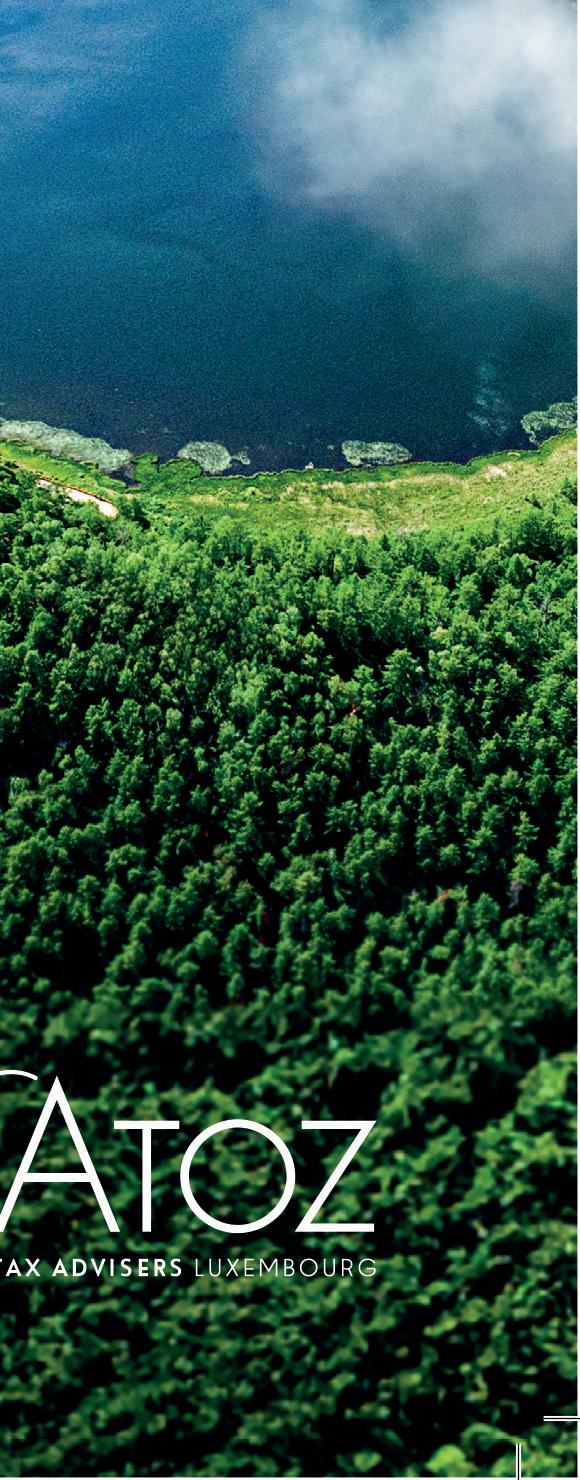
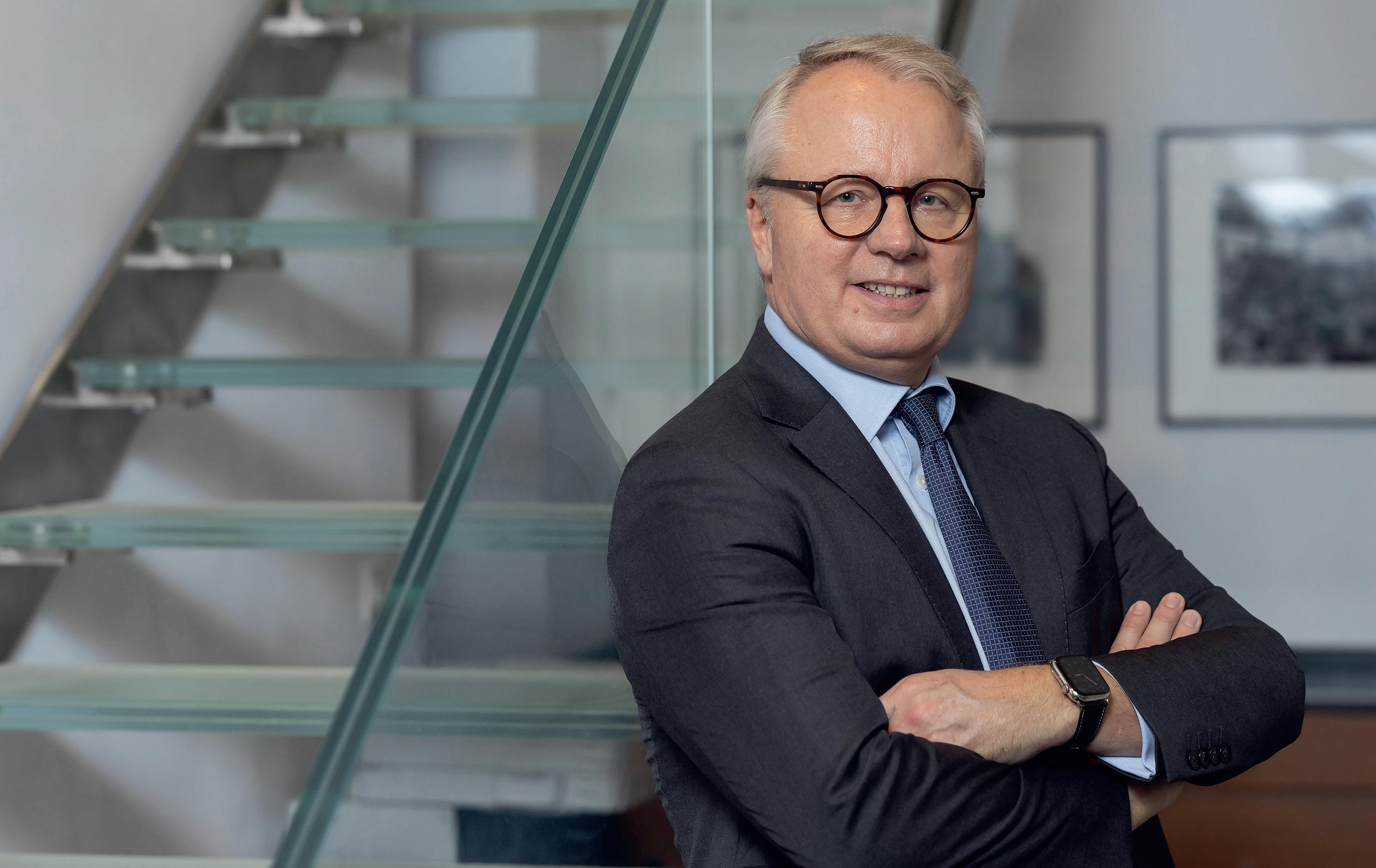
Sponsored
Carmignac recently entered the private asset landscape, opting for an ’evergreen’ structure as a good fit to meet the needs of its client base. Edouard Boscher, head of private equity at the >30-year-old French asset manager with over €30bn of AuM, explained why this strategy is in line with Carmignac’s overall vision and how this has been put into action.
Why did Carmignac decide to launch a so-called “evergreen” private equity fund?
EDOUARD BOSCHER We identified keen interest around a private equity offering and were convinced in the complementarity of the strategy to Carmignac’s existing range of funds. We identified the evergreen structure as being the most appropriate to provide immediate access to the asset class, with a reasonable liquidity mechanism for long-term investments.
Investors also appreciate that evergreen funds offer ease of administration compared to closed-end funds, allowing their capital to be put to work efficiently from day one. Furthermore, an evergreen structure allows clients to actually see the portfolio they’d be investing in, and thus have greater visibility over where their money is going.
Is another advantage that these structures better enable you to offer liquidity to clients?
E.B Yes. Almost all private equity funds are closed-end, where investors’
commitments are drawn over multiple capital calls and the average fund lifecycle is typically 10 years. As part of Carmignac’s Private Equity Evergreen offering, investors are given the opportunity to redeem their shares in the fund every quarter. This is a fair and typical approach for evergreen structures, allowing liquidity optionality to be provided for an intrinsically illiquid asset class, which is a great value proposition.
What makes Carmignac different in its approach?
E.B At Carmignac, we invest our own equity into our funds, ensuring a clear alignment of interest with our clients. We believe that our fund grants access to high-quality investments that were historically reserved for institutional investors. Unlike a ‘master-feeder’ fund structure which may be used for closed-end funds, our evergreen fund is the ‘main fund’, hence preventing conflicts of interest. Given Carmignac’s long-standing track record in public market investment strategies, we are also able to enjoy the best of both worlds, leveraging sectorial or macroeconomic insights and operational best practices from the public side. These give us a unique edge in our due diligence, analysis, risk management and execution.
“An evergreen structure provides immediate access to the asset class, with a reasonable liquidity mechanism for longterm investments”
Edouard Boscher Head of Private Equity Carmignac
Why do investments in the secondary market fit your strategic approach?
E.B Primary market investments used to be the main focus for private equity, but the secondary market has greatly matured over the last 10 years and is made of increasingly sophisticated players. It’s no longer driven by distressed sellers who can’t sustain their existing capital calls, rather, it is used by asset managers to make careful decisions around actively rebalancing their portfolios. The secondary market is very interesting for a few reasons. Firstly, it mitigates the effect of the ‘J-curve’ which is most pronounced in primary investments into private equity funds. These primary investments typically entail negative returns in the first two or three years before generating positive returns, thus forming a “J” shape in the returns curve.
A second advantage is these funds bring immediate diversification because it involves investing into a portfolio of established assets, plus secondary assets tend to be less volatile. Moreover, these assets are further along their value-creation lifecycle, which brings the potential for faster return of capital. We are highly convinced that the current market conditions make it a particularly attractive time to invest in the secondary market, with the possibility of attractive discounts on portfolios of high-quality companies.
How has Carmignac adapted to the unique requirements of private equity asset management?
E.B We have assembled a team of experienced investment professionals who have previously worked together, as well as a strategic partnership with Clipway, a global secondaries investment manager that will support us with deal sourcing and investment analysis. We also are able to benefit from knowledge-sharing synergies, drawing on a wide range of specialised teams, such as sustainable investment, sector and macro analysts to bolster our investment analysis, giving us unique perspectives compared to pure-play private equity houses.
Finally, we are also able to leverage established corporate functions to ensure the smooth execution and monitoring of investments. This includes dedicated risk management, compliance and reporting teams.
is
E.B We began seeding the fund this spring with c.€100m invested by Carmignac through its own equity. This gives the fund both critical mass and approximately six months of track record to show our clients and distributors today. Our fund is currently structured as a Luxembourg SICAV RAIF, but we are working to convert this into a UCI Part II by the end of the year subject to regulatory approval.
Disclaimer: MARKETING COMMUNICATION. Please refer to the KID/prospectus of the fund before making any final investment decisions. This document may not be reproduced, in whole or in part, without prior authorisation from the management company. It does not constitute a subscription offer, nor does it constitute investment advice. The information contained in this document may be partial information and may be modified without prior notice. The Management Company can cease promotion in your country anytime. Investors have access to a summary of their rights on the following link (paragraph 6): https://www.carmignac. com/en_US/article-page/regulatory-information-1788. The Sustainable Finance Disclosure Regulation (SFDR) 2019/2088 is a European regulation that requires asset managers to classify their funds as either ‘Article 8’ funds, which promote environmental and social characteristics, ‘Article 9’ funds, which make sustainable investments with measurable objectives, or ‘Article 6’ funds, which do not necessarily have a sustainability objective. For more information, please refer to https://eur-lex.europa.eu/eli/reg/2019/2088/oj. The decision to invest in the promoted funds should take into account all their characteristics or objectives as described in their prospectus. Carmignac Private Evergreen refers to the Evergreen sub-fund of the SICAV Carmignac Private S.A. SICAV-RAIF registered with the Luxembourg RCS under number B65477. Access to the Fund may be subject to restrictions with regard to certain persons or countries. The Fund may not be offered or sold, directly or indirectly, for the benefit or on behalf of a U.S. person, according to the definition of the US Regulation S and/or FATCA. The Fund presents a risk of loss of capital. The risk, fees and ongoing charges are described in the KIDs (Key Information Document). The Fund’s respective prospectuses, KIDs, NAV and annual reports are available at www.carmignac.com, or upon request to the Management Company. The KIDs must be made available to the subscriber prior to subscription.
DISCOVER MORE ABOUT THE FUND
The CEO of the Association of the Luxembourg Fund Industry outlines the challenges and opportunities for the private market fund sector in the grand duchy.
Words SERGE WEYLAND
Over the past decade, Luxembourg has consolidated its position as a premier domicile for private asset funds and alternative investment fund managers (AIFMs), emerging as a strategic hub for private equity, real estate, infrastructure and private debt funds. The Luxembourg Financial Sector Supervisory Commission (CSSF) has played a significant role in shaping an environment that is both rigorous and investor-friendly, making Luxembourg a preferred destination for fund managers and investors alike.
One of the most prominent growth drivers for private asset funds is the increased demand for alternative investments. With traditional asset classes o ering lower yields, institutional and high-net-worth investors have been seeking alternatives, such as private equity and real estate, that can o er better returns and diversi cation bene ts. Luxembourg has indeed witnessed an eye-popping growth of 50% p.a. of assets in these structures over the past ve years which, combined with other legal structures, brings the total assets under management in alternatives domiciled in Luxembourg to roughly €2trn.
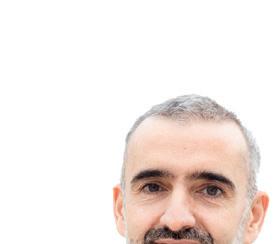



“ Fund tokenisation could prove to be a game changer”
This context has helped Luxembourg move up the value chain. Roles such as deal structuring, risk management, valuation and investor relations are now covered in the country, solidifying Luxembourg’s position as a leading jurisdiction for value creation.
The ever-evolving regulatory environment, new ESG requirements and increasing scrutiny of private asset funds by European policymakers and regulators may continue increasing compliance costs for GPs.
Competition from other fund domiciles, such as emerging hubs in Asia and the Middle East, also poses a threat. Additionally, as a result of the tremendous growth experienced in private assets, Luxembourg faces a talent shortage in key areas such as nance, compliance and technology.
To address these challenges and capitalise on opportunities, Luxembourg is pursuing several strategic initiatives. Public-private partnerships, involving collaboration between the government, government agencies, financial industry participants and industry bodies like Al , play a crucial role in driving innovation and ensuring the competitiveness of Luxembourg’s nancial sector. The government has, for example, recently proposed supportive policies, including tax incentives and legal reforms, to further attract talent, ensure competitiveness and promote the fund industry.
Technological innovation also plays a key role in ensuring competitiveness and scalability of the Luxembourg private assets fund industry. The rise of ntech, blockchain and digital assets is transforming how funds operate and are distributed. Fund tokenisation could prove to be a game changer in how private asset funds can be accessed by investors and could pave the way for the creation of largescale secondary market platforms.
AI has the ability to help Luxembourg further scale its business operations and accommodate the strong growth, whilst alleviating some of the resource shortage. Luxembourg needs to continue adapting by embracing these technologies, enhancing its appeal to tech-savvy GPs and investors looking for innovative solutions.
Looking ahead, Luxembourg is well-positioned to maintain its leadership in the private asset fund space. Projections indicate robust growth in the coming years, with sectors like technology, infrastructure and sustainable investments likely to see signi cant expansion.









“The most ‘efficient’ way to better understand the future of private markets and funds is to attend our Insights conference on 17 October and hear, discuss and exchange with the best-inclass experts, investors and providers,” Stéphane Pesch, CEO of the Luxembourg Private Equity and Venture Capital Association (LPEA), told Paperjam. This section tackles themes on the conference agenda and includes the LPEA’s chair giving an insider look at secondary markets in Luxembourg.
While European private capital fundraising has (at press time) been slower in 2024 than in previous years, Luxembourg has maintained its place as the top domicile. Nevertheless, total assets under management are expected to jump from $2.9trn this year to $4.3trn in 2028, according to Preqin Pro.
Words AARON GRUNWALD
Europe-focused private capital fundraising
Number of funds by asset class and year of final close, as of 4 September 2024
Europe-focused funds, as of 4 September 2024
Europe-focused funds, as of 4 September 2024
Europe-focused funds, as of 4 September 2024
Europe-focused private capital assets under management (2015-2023) and forecast (2024-2028)








We are the facilitator to service your investment vehicles in Luxembourg. For a decade and a half.













Claus Mansfeldt, who heads Swancap in Luxembourg, talks about accessing top-tier leveraged buyout funds, the strategic use of secondaries and risks in the private equity space.

“We are in the business of providing access to what we like to think, are best in class leverage buyout [funds] in Western Europe and North America,” said Claus Mansfeldt, chair of Swancap Luxembourg and chair of the Luxembourg Private Equity and Venture Capital Association (LPEA).
The “Swan” in Swancap, an investment boutique with €4bn in assets under management, stands for Sleeping Well At Night. The interview with Paperjam makes us believe that a black swan event poses limited risk in derailing its performance trajectory, given the firm’s emphasis on diversification.
Buyout funds: outperforming public markets
Mansfeldt explained that Swancap is a fund of funds manager covering a large spectrum of buyout funds that include midand large-cap companies. “[We use] three different routes--primaries, secondaries and co-investments--to get to the underlying buyouts.”
He argued that the median historical return of buyout funds over the long run (30 to 40 years) has been between 12% to 13%, net to investors, whereas the S&P 500 performance on “a private market equivalent basis” has been 6% to 7%, annually. He thinks that this outperformance explains why investors are ready to accept the lack of liquidity.
Earlier this year, Paperjam reported on the outcome of a performance review on private asset investments by Norges Bank Investment Management. Paperjam concludes that Swancap has elected one of the sweet spots in the alternative private investments space, as NBIM found that leveraged buyout funds “outperformed public equities, on average, by 3% to 4%,” whereas venture capital and growth equity funds “have underperformed by 1% to 2%,” on average. The study reviewed funds with vintage years from 1985 to 2016 with performance data up to 2Q23.
On the other hand, Mansfeldt admitted that the dispersion around the median performance for private equity is “much, much wider” than for mutual funds investing in public companies. The latter tend to maintain a portfolio very close to their benchmark. In the bottom quartiles of a
buyout fund universe, “you could have funds that are going to potentially lose a little bit of money or not return much.”
Paperjam reported similar observations made by NBIM. Indeed, the differences in the performance between the top and bottom quartiles were as high as 12.1% for buyout funds. Consequently, Mansfeldt thinks that gives Swancap “a very strong raison d’être to assist people navigating this space.”
Investing in the best buyouts is marred with obstacles
“We provide solutions so that investors can get a good and balanced exposure to the best in class or top tier in the game… but there are hurdles for getting in,” said Mansfeldt. Beyond the extensive effort and the use of analytics to select funds, he commented that performing funds “are quite full” when raising money as investors such as Swancap tend to allocate at least the same amount upon redemption. This is especially true in Europe, where investors in many countries such as Germany and Italy have been “a bit behind” compared to their peers.
Given that the minimum ticket size runs between $5m and $10m, PE products have been the reserve of institutional investors, large family offices or the “super wealthy.” He thinks that Swancap helps provide greater access but is not yet a retailisation of the products for individual investors or smaller pension funds which do not have a 10 year-plus relationship with primary funds. Yet with a minimum commitment of $1.5m, spread evenly over four years, it is hardly accessible for entities with less than around $10m in total assets to ensure proper diversification with other liquid asset classes.
Secondaries: an opportunistic investment
Mansfeldt explained that Swancap’s multi strategy includes three elements: primary funds (70% of total assets), secondary funds (15% to 20%) and co-investments (10% to 15%). The strategy enables the firm to offer a diversified portfolio through “low risk” primary funds while co-investments reduce “a little bit the fee drag,” therefore increasing the internal rate of return (IRR)
Give credit to secondaries when it’s due
Claus Mansfeldt stated that Swancap wants to launch its first pure play secondary portfolio in December 2024 on the back of investors’ demand following a strong track record as a component in the multi strategy funds.
Prof Oliver Gottschalg at the French business school HEC ranked Swancap, a German fund manager whose funds are domiciled in Luxembourg, number one amongst European fund-of-funds in the 2022 HEC Paris-Dow Jones PE Fund of Funds Performance Ranking.
A total of 454 FOFs raised between 2009 and 2018 were analysed to determine the top performers. According to data provider Preqin, the top FOF firms are primarily--if not solely--focused on VC and generally smaller in comparison to Swancap.
1 Union Grove Venture Partners
2 Peakview Capital
3 Cross Creek
4 Performance Equity Management
5 Horsley Bridge Partners
6 Bay Hills Capital
7 Accolade Partners
8 Glouston Capital Partners
9 Swancap Partners
10 Schroders Capital
and the money multiple, also known as total value to paid-in (TVPI).
As for the specific features of secondaries, they shorten the overall J-curve of the multi strategy by returning capital to investors more quickly than primaries and co-investments. Indeed, he noted that their secondaries generally achieved a break-even point after around three years compared to eight years for primaries. Both figures are comparable to what is seen elsewhere in the industry. Moreover, he observed that secondaries tend to have a lower money multiple but a higher IRR, helping the performance of the multi strategy.
Swancap generally provides the performance data points only to limited partners (LPs). Paperjam had access to some of them
and noted that investments in secondaries have returned better results, both in terms of TVPI and IRR (more than 2X and 30%, respectively), compared to primary funds and co-investments.
“We buy secondaries, like a secondary fund,” stressed Mansfeldt. Swancap would generally buy an existing fund a little bit earlier than halfway through its life, “so that there is still potential for value creation in its remaining life.” In other words, the firm is more attracted by a four or fiveyear-old fund than a seven-year-old fund to ensure that there is still some “runway left to extract value” from the remaining portfolio of companies. Yet he admitted that they could be tempted by very old funds but with a “bigger discount.”
Mansfeldt explained that they invested in more than 50 secondaries amounting to over $1bn. Swancap also buys secondary fund portfolios from LPs. He does not consider the firm a major player in the industry, as it has about $100m to $200m dedicated to the asset class, meaning that it will generally invest $5m to $20m tickets for a fund or a portfolio of funds.
Are secondary funds safer than primary funds?
“It should be less risky if you can achieve the same level of diversification as a primary fund of funds, which is not always easy,” commented Mansfeldt. Even with less diversification, one must account for the fact that a fund holds proven assets
with several years of experience under new ownership. These leveraged companies have shown a capacity to sustain and service their debt and some may even have started to reduce gearing. “A shorter journey to the exit should [also] mean low risk.”
Not all is bright blue sky. Mansfeldt warned that investors may be confronted with “sub optimal assets” in the coveted portfolio. Sellers may have some great brands in the portfolio, but may require selling “the whole basket” under a “take it or leave it” transaction. “That’s the advantage of the primary agenda. You can then just choose your favourite [funds].”
Discounts have slowly disappeared over the last year
For top performing funds, “medium aged prime” with some remaining upside, he noted that LP-led deals are currently priced with a discount ranging from 0% and 10%. “People will compete for those assets.” Ceteris paribus, he observed discounts ranging between 15% and 30% for older funds.
We don’t see much of a discount to NAV in either continuations fund or continuation vehicles, he said. These are GP-led secondaries. A continuation fund is set up to park some old deals from maturing funds, whereas the continuation vehicle carries single assets which demand co-investment skills to assess the deal. “It’s usually transferred around the carrying value.”
The absence of a discount comes as no surprise given that these portfolios/companies are generally transferred to the CF or CV because they maintained a strong performance. GPs avoid giving up value through a quick sale to quicken the closure of an old fund.
Mansfeldt commented that discounts have reduced, as market sentiment has improved in the last year. It reflects the stabilisation of rates “helping pricing and predictability of finance.”
Substance in Luxembourg
Swancap has an AIFM in Luxembourg which includes all its funds. Mansfeldt specified that their investment/portfolio advisors are based in New York, Munich and Milan, but also in Luxembourg, where he is the chair of the investment committee
“ [We use] three different routes--primaries, secondaries and co-investments--to get to the underlying buyouts. ”
and Luxembourg management company. Questioned on the emergence of a secondary fund business with investment/ portfolio advisors in Luxembourg, he replied that home grown general partners in Luxembourg are “extremely unusual… in secondaries, co-investment or primaries.” He remarked that Mangrove, Expon “and few others are all in the venture capital business.”
“Anything else” is a hybrid structure, meaning that the AIFM has their funds domiciled in Luxembourg but “the portfolio input, advisory and sourcing will typically happen globally.”
Mansfeldt observed more staffing of investment managers locally but admitted that “the growth” has rather been for AIFMs to demonstrate that investment committees, conducting officers and boards of Luxembourg management companies have the “capacity to assess and opine on the investments,” proposed by mother companies in New York, London, Paris, Munich or Stockholm.
He thinks that more competence is building on the back of regulatory changes as observed with the function of investor relations, which are now required to be based in the EU after Brexit. However, he acknowledged that the most tangible development on secondaries have been an increasing number of fund domiciliations and the “emergence” of investment management expertise.
4.0 %




Aïssata Coulibaly of Deloitte Luxembourg outlines the challenges and strategies of adopting ESG standards, emphasising the need for robust data management and reporting. She explains how effective ESG compliance can reduce risks and boost long-term financial performance.
Words KANGKAN HALDER
“ Integrating ESG requires cultural and procedural shifts within organisations. It is essential to get everyone on board and provide training ”





In an interview, Aïssata Coulibaly, audit partner at Deloitte Luxembourg, provides a deep dive into the evolving landscape of environmental, social and governance (ESG) standards.
Addressing the complexity of multiple reporting frameworks and the necessity for accurate data collection, Coulibaly outlines how companies can navigate these challenges and bene t from strong ESG practices, including improved nancial stability and investment appeal, while also emphasising the role of governance and strategic integration in achieving long-term success.
ESG standards
the Corporate Sustainability Reporting Directive (CSRD) impose obligatory requirements, while voluntary codes like the International Financial Reporting Standards (IFRS S1/S2), Global Reporting Initiative (GRI) and the Task Force on Climate-related Financial Disclosures (TCFD) o er alternative guidelines. This multiplicity can be overwhelming, especially for companies with diverse portfolios spanning multiple sectors and regions, each with di erent ESG focuses “This makes it di cult for companies to determine which one best aligns with their goals and stakeholders’ expectations,” reasons Coulibaly.











AÏSSATA COULIBALY Audit partner Deloitte Luxembourg



















The journey towards ESG compliance is fraught with challenges, mainly due to the fragmented nature of reporting frameworks. Coulibaly noted that the sheer variety of ESG standards often prompts companies to ask, “Which one?” The absence of a universal standard forces companies to navigate a landscape of both mandatory and voluntary frameworks. In the EU, regulations such as the Sustainable Finance Disclosure Regulation (SFDR) and



Moreover, “gathering accurate and complete ESG data is another hurdle.” E ective ESG reporting demands robust data management systems and advanced technology to ensure the integrity and completeness of data. This is especially critical for private equity funds, which face di culties in gathering and verifying ESG data during due diligence processes. Coulibaly points out that regulations like SFDR create additional complexity due to the absence of a consensus on what constitutes
ISSB International Sustainability Standards Board
TCFD Task Force on Climate-Related Financial Disclosures
TNFD Taskforce on Nature-related Financial Disclosures
comprehensive ESG data. Although the CSRD could potentially serve as a valuable data source for principal adverse impacts (PAI) reporting under SFDR, “ESG reporting for the CSRD is not required until 2025,” adds Coulibaly.
To ensure the credibility and accuracy of ESG data, Coulibaly underscores the need for “transparent methodologies and robust processes.” This includes “thoroughly documenting everything to ensure transparency and build trust among stakeholders.” Technology--particularly advanced software solutions and analytics--plays a crucial role, improving data accuracy by reducing human error through automated ESG reporting tools.
In addition, “engaging an independent third-party such as the fund’s external auditor--to review and validate ESG data methodologies, processes and controls-adds an extra layer of credibility,” she says. “This can be achieved through limited assurance on selected ESG key performance indicators (KPIs), PAIs, or the use of proceeds from green bonds, which reduces the risk of greenwashing accusations.”
ESG compliance is increasingly recognised for its positive impact on corporate financial performance and market valuation, according to Coulibaly. “There is a clear positive impact with ESG
SFDR, CSRD and ESRS are the key mandatory frameworks for sustainability reporting in the EU, with others like the voluntary TCFD influencing them and global standards like ISSB potentially being integrated in the future.
compliance, as it helps companies achieve more stable cash flows and reduced volatility by identifying and managing risks Additionally, companies with strong ESG practices often attract more investment, especially from institutional investors focused on responsible investing driven by client interest or regulatory pressure.”
Research shows that firms integrating ESG principles often outperform their peers over the long term due to sustainable practices and better governance.
Coulibaly highlighted several benefits of aligning with ESG regulations. Recent changes in global sustainability reporting, such as the CSRD, European Sustainability Reporting Standards and the Taskforce on Nature-related Financial Disclosures (TNFD), signal significant regulatory evolution. Referring to the Deloitte 2024 sustainability action report, Coulibaly notes, “Based on the survey of 300 executives from large publicly owned companies, the report reveals that 20% of companies expect enhanced ESG reporting to improve the brand’s reputation, 15% expect better talent attraction and 14% anticipate pricing premiums for their products.” She adds, “Internally, 51% of companies foresee benefits like improved operational efficiencies, risk reduction and strengthened stakeholder trust.”
Aligning with ESG regulations also helps firms and funds stay ahead of market trends and investor expectations.
“Another important aspect is that ESG factors help investors assess risks and returns more accurately, which helps them make better decisions. Companies adhering to ESG regulations are often seen as more sustainable and ethical, which attracts long-term and responsible investments.” Furthermore, “ESG regulations help stabilise financial markets by including long-term risks, such as climate change and social upheavals, in their risk management frameworks. Consequently, companies can avoid potential financial losses and reputational damage. ESG rules also promote coherence and comparability across institutions and geographies. Essentially, these regulatory and policy guidelines help align financial institutions’ practices with broader sustainability goals, aiding the transition to sustainable finance and green lending solutions.”
European and international ESG rules foster a sustainable business ecosystem where responsible management, innovation and risk mitigation drive value for both companies and investors, according to Coulibaly. For companies, ESG compliance enhances capital access, boosts
Measuring the tangible value of ESG initiatives involves setting and tracking relevant ESG KPIs. “For instance, in private debt, better governance can lead to lower default risks and enhanced creditworthiness, translating into better risk-adjusted returns. Continuous monitoring of ESG KPIs and improvements based on feedback and evolving best practices will build trust,” says Aïssata Coulibaly at Deloitte.
Financial metrics also reflect value creation. “Initiatives like energy efficiency and waste reduction result in direct cost savings and efficiency gains,” she notes. Private equity firms may achieve “higher exit multiples due to enhanced sustainability credentials of portfolio companies.”
Case studies provide further insights, explains Coulibaly. “Sustainable buildings often command higher rents and lower vacancy rates, creating direct financial benefits and stronger long-term property value.” Tracking ESG KPIs allows companies to showcase value through cost savings, improved efficiencies, and increased appeal to ESG-focused investors.
However, measuring ESG value is challenging. ESG due diligence often “lacks depth, and quantifying an ESG premium is difficult due to the risk of double counting,” Coulibaly warns. Observing clear ESG premiums or discounts on asset prices remains tricky, making it challenging to factor ESG into valuations. Hence, general partners acquiring assets to “make them greener must navigate this process like any other transformation without an initial price discount.”
reputation and increases brand value. For investors, “ESG-compliant companies are often better positioned for long-term financial performance, offering sustainable and resilient growth,” while mitigating environmental, social and governance risks. “ESG alignment also helps investors avoid regulatory penalties by aligning their portfolios with ESG standards and meeting emerging global regulations.” She notes that growing demand for ESG investments drives value creation and attracts increased fund inflows. Investors can leverage their influence to drive positive change in companies’ ESG practices, leading to improved corporate behaviour and performance, and ultimately better investment returns.
Companies can leverage ESG reporting to gain a competitive edge in the global market by integrating ESG factors into their core strategies and reporting progress diligently. Coulibaly argues, “Strong ESG practices attract investors who value sustainability and ethical behaviour, while also demonstrating effective risk management, and its initiatives can also improve operational efficiency through better resource use and drive innovation, leading to cost savings and new opportunities.”
By adopting a long-term perspective, companies can future-proof their operations and engage meaningfully with stakeholders, supporting “both immediate business goals and long-term resilience, enhancing competitiveness and positioning in the global market.”
Successful integration of ESG principles into business models involves several key strategies. “Aligning ESG principles with the company’s core values and mission ensures authenticity and ease of implementation,” Coulibaly notes. She highlights that companies effectively integrating ESG principles benefit from strong top leadership commitment, stating, “when the board and C-suite executives fully support ESG principles, these become ingrained in the corporate culture and decision-making processes.”
Moreover, integrating ESG into the overall business strategy rather than treating it as an add-on “ensures that sustainability
is considered in every business decision and operation, promoting long-term thinking rather than short-term gains .” And importantly, “continuous improvement is the key.” Successful companies continuously assess and improve their ESG initiatives, adapting to new challenges, opportunities and stakeholder expectations, advises Coulibaly.
Integrating ESG considerations into corporate governance involves several key strategies. Establishing a dedicated ESG committee and providing ongoing education for board members are essential. Setting clear ESG goals, developing KPIs and linking ESG metrics to executive compensation “ensures that everyone is accountable.” Incorporating ESG risks into risk management and using standardised reporting frameworks, such as GRI or TCFD, enhances transparency.
Looking ahead, “we anticipate that ESG regulations will become stricter due to climate change, social issues and governance challenges.” While global standards may simplify compliance for multinationals, integrating ESG into core operations will remain challenging. Adapting to these regulations can offer a competitive edge by attracting investors and customers, whereas non-compliance risks damaging reputations.
To navigate these changes, companies should stay informed about evolving standards, embed ESG into their strategies, leverage technology for ESG management, engage stakeholders and ensure data credibility, advises Coulibaly. She stresses that “building in-house ESG expertise is crucial for long-term success and value creation.”
Every two years, Maison Moderne produces the «Paperjam Top 100the ranking of the most influential economic decision-makers in Luxembourg». This ranking is the result of the work of a diverse and independent jury, and it is exclusively revealed during a gala evening where the jury presents the top ten ranked individuals on stage.
This 10th edition of the Paperjam Top 100 ceremony is organized as a seated dinner.



To realise the considerable potential of retail investment in private markets requires asset managers to master the complexities of so-called semi-liquid/hybrid funds. Davide Dragoni, Head of Luxembourg Private Capital Product & Solutions, Securities Services at BNP Paribas, explains how BNP Paribas works to facilitate these strategies.
The recent revamp of ELTIFs (European Long-Term Investment Funds) facilitates the potential for fundraising through semi-liquid fund vehicles. Achieving this goal requires asset managers to manage and distribute funds that straddle the liquid-illiquid divide. The European industry is currently in a startup phase in a market with considerable longterm potential.
“Private equity players need to get up to speed on how to create and run facilities, such as liquidity buffers, that can enable the flexibility expected by non-institutional investors,” Mr Dragoni said. As for liquid-fund specialists, they often choose a fund-of-funds approach to give investors the range of exposure clients are seeking.
“It’s important to manage these arrangements efficiently in line with a clear strategy, including imperatives such as avoiding holding excessively large liquidity buffers that could impact the rate of return on private asset investments,” he said. “However, this must be balanced with ensuring retail investors can redeem at the time and valuation they expect,” he added.
Additionally, each asset manager will have their own strategy regarding liquidity management tools that are required during times of market stress. Fine-tuning mechanisms such as gating, swing pricing anti-dilution levies, and redemption fees requires diverse, high-level fund design expertise, and also the knowhow to put these plans into action. This execution relates to both the technical side of managing the fund, but also working with distributors.
“Private asset specialists have less experience partnering with banks, independent financial advisors, and the like. While UCITS players have extra work to do to provide investors’ advisors with the timely information they need about the assets in these bespoke products,” Mr Dragoni explained.
Moreover, throughout this process, it is vital to keep regulators up-to-date with necessary data and reports. Additionally, it is important to remain mindful of investors’ and distributors’ reporting needs.
Asset and structuring expertise spanning both the liquid and illiquid worlds is vital to support these semiliquid funds. It requires an integrated, cross-discipline approach that brings together the specialist knowledge and expertise found within a major service provider’s organisation.
“We have developed this expertise in house, and we have adapted our systems
Semi-liquid funds require mastery of the demands of both private asset and UCITS worlds”
Davide Dragoni, Head of Private Capital Product & Solutions Securities Services at BNP Paribas
to facilitate seamless teamwork between our liquid and non-liquid assets specialists,” Mr Dragoni said. “Teams have the knowledge and technology infrastructure to scale and automate processes and meet operational challenges. Each fund is unique, and so each requires tailormade arrangements to achieve their goals,” he added.
FOR MORE INFORMATION, GO TO HTTPS://SECURITIES.CIB.BNPPARIBAS/FR/ LUXEMBOURG-2/
DRIVERS OF PRIVATE ASSET RETAILISATION
– Affluent investors enticed by historical performance of private assets
– Private banking institutions seeking to differentiate themselves
– Institutional investors reaching asset allocation limits
– Increasing public support for long term investments (e.g. transition to green economy)
KEY CHALLENGES FOR SEMI LIQUID FUND ASSET MANAGERS
– Private equity players need to develop facilities to manage liquidity
– Liquid-fund specialists have to provide a broader range of asset exposure
– Both have to ensure investors understanding of intrinsic characteristic of the product: while liquid assets hinder expected superior returns of private assets it might not guarantee ability to redeem in all market circumstances.
Silke Bernard at Linklaters law firm tells us where things stand with the revised European long-term investment fund (Eltif) regulation and discusses a few of the remaining open questions.
66.7 %
two-thirds (84 out of
There seemed to be a lot of excitement from the market when the draft regulatory technical standards (RTS) on the European long-term investment fund were published in March of this year, which you’ve previously called a “step in the right direction” that would be welcomed by asset managers. Why is this the case and have you seen an increased interest in Eltifs since then? Definitely. Since March, we have had a number of back-and-forths between the European Securities and Markets Authority (Esma) and the European Commission. Now we have--hopefully--the final text, which is in the scrutiny period of the co-legislators in Brussels. So, most likely, this should be the final text.
There’s a lot of excitement, and many sponsors who were a little bit scared by all that back-and-forth between Esma and the European Commission have now launched their projects. We have a full range of Eltifs in the make--some already approved, some about to submit. So there’s a lot of activity.
And why is there such excitement? For any Eltifs that would allow redemption--be they open-ended or semi-liquid-there was a big question mark around redemption requirements, the constraints around redemptions, liquidity management tools, also the matching. And so that was a bit of a question mark of where we would land. In order to enable sponsors to set up their semi-liquid or open-ended Eltifs, they needed to know whether they could implement these things or whether the constraints would be not viable.
You’ve seen some of the proposals that were made, which, in a one-size-fits-all approach, were imposing a mandatory notice period, a certain liquidity bucket, which was very high--up to 40%. If you have a 40% mandatory liquidity bucket in a fund where you only have--by law-45%, that means you need to juggle all the time to be exactly between 40% and 45%, and that also affects the attractiveness and financial performance.
So having now the nal version, which is much more aligned with the needs of the practice, and which also re ects the large variety of Eltifs we are seeing on the market--the different features, different investment strategies, di erent liquidity profiles and so on--it now leaves more discretion and adjustment possibilities to fund managers and sponsors to build an Eltif according to realistic needs. So yes, de nitely. There is an uptick.
The European Commission on 19 July 2024 adopted the RTS. What were the key points addressed in these RTS and how do you see them affecting the market?
The RTS--in their nal form and shape-are more aligned to reality, as I said, in that they allow the structuring of Eltifs according to di erent models. You will have seen that there are different options, for instance, for the minimum liquidity bucket; if you allow redemptions, you can structure it in di erent ways, which allow managers to have a more exible approach.
Also, some little things in the text have changed, for instance, to clarify that when you have an open-ended fund and there are redemptions, your liquidity bucket will drop, and you can rebuild it in a reasonable amount of time. So that is just clarifying or stating the obvious: that you will have some time to rebuild your liquidity.
DO YOU SEE INTEREST AMONGST RETAIL INVESTORS WHEN IT COMES TO ELTIFS?
“I’m not so much directly in touch with retail investors, so I don’t know what they say, but I hear from financial intermediaries that there’s a big appetite,” says Silke Bernard.
A CRYSTAL BALL QUESTION: WHERE DO YOU SEE ELTIFS IN FIVE YEARS? OR, IN A PERFECT WORLD, WHERE WOULD YOU HOPE TO SEE ELTIFS IN FIVE YEARS?
“ The reduction of the CSSF response and approval time is one of the greatest success stories of the Luxembourg regulator in the last years ”

SILKE BERNARD Partner Linklaters






Then there was one very technical, small point, that is, the RTS requiring that certain information had to be in the constitutional documents. But if you have, for instance, an umbrella, you could not put all the details on percentages, notice periods and so on in the constitutional documents, because you may have 20 sub-funds or so, so that would have in ated the constitutional documents. So there is some adjustment.
I think the main comment I would make is that the legislator--so here, the European Commission--has just listened to what works in practice and adjusted without-and I wish to stress it--without decreasing the investor protection. So, for the investors, it’s neutral whether the notice period is in the articles or in the PPM. It doesn’t make any change. But in practice, that could have created big headaches.
So it is really--to me--a very good reconciliation between practical needs and investor protection. To me, it is a very successful piece of legislation.
What should we expect as a next step in the process?
We are now in the period that the European Parliament and European Council need to formally endorse, or vote, on the text, because they are co-legislators. I understand
“I think both have the same answer. I see Eltifs as being a core fund product of the future. I think it will take some of the market share from traditional, institutional funds. I see already some institutional clients--including some clients like high-net-worth families or ultra-highnet-worth individuals--moving towards Eltifs because it has become a bit of a label and a quality stamp. I see Eltifs continuing to grow quite massively.”
“What I would also see is a move towards more evergreen structures. In the past, we had more closedended Eltifs, and that of course then increases the number. I now see an interesting move towards more evergreen structures, which will decrease the number, but probably increase the volume. So probably in the future, we will need to look at the volume of Eltifs, and not only the number.”
that the first date the European Parliament could do that was in mid-September. Personally, I would not expect there to be any new comments or re-opening of the text. I think it will simply, as is quite standard, be endorsed and voted on. I would not expect any late surprises to come up. So probably, we can expect endorsement by the two co-legislators, and then publication after, and then it’s final, published and official.
We spoke a few months ago--after the Alfi global asset management conference in March, during which Ireland’s 24hr approval process was discussed--and you mentioned that you understood this to be for non-retail (i.e., professional) funds only. Have you seen increased interest in Ireland as a domicile, or shift away from Luxembourg to Ireland? I have seen nobody walking away. All of the Irish funds are only for professional investors. I even have a few clients who
WHAT DO YOU SEE AS SOME OF THE REMAINING OPERATIONAL CHALLENGES RELATED TO ELTIFS?
“I think one of the biggest remaining obstacles is to calculate, very concretely, the required minimum liquidity bucket for various different scenarios. So that is the RTS annexes one and two,” says Silke Bernard. “It is a little bit complicated: a few tweaks, certain features, to find exactly the right percentage and decimals and so on. That is currently a question I’m receiving from all sides, which hopefully should be a very temporary question. Within a few weeks, I think everybody will have formed the same understanding. With Alfi, we are working on hopefully publishing some calculation examples so that people can easily understand it.”
are looking into Eltifs and who have their AIFM in Ireland. None of them has said they would go for Irish Eltifs for retail distribution.
During this same Alfi conference in March, you mentioned during a panel that the Luxembourg Financial Sector Supervisory Commission, the CSSF, was “geared up” and ready to go with a new application form. Do you have any insights on if/how this has accelerated the review process of Eltifs in Luxembourg? What else has the CSSF done to facilitate the set-up of Eltifs?
That has been a huge change, and it’s creating a lot of really positive noise. The CSSF has massively reduced its Eltif review and approval time. So, all of our Eltif files we have submitted--and some very complex Eltifs--they received comments within four or five days in substance, which was never achievable in the past. And we had all our approvals within maximum two months, which is just amazing.
And that, I understand from my discussions, is thanks to that application form, which is a little more detailed in the past. You have boxes where you can tick, and when you fill in certain boxes, others are greyed out, and so on. So it’s a little bit more of a sophisticated application form.
Was the communiqué from 29 July on requests for authorisations/amendments a big change?
The communiqué just recently was updating it without major changes. But, it has proven to be really a very efficient tool. I am telling everybody that the reduction of the CSSF response and approval time [is] one of the greatest success stories of the Luxembourg regulator in the last years.
They did really well, and on top of that, they have trained teams. They have formed a ‘core team’ and an ‘extendable team’ so they can add people who have received Eltif training whenever they have too many files coming in at the same time to be very reactive and responsive and to be able to deal with it very quickly. We have some of the newer case officers working on Eltifs, and they are super sophisticated; they understand things, and they’re really good to work with.
22TUESDAY
Chief Legal Officers and Senior Legal Leaders face unprecedented challenges and opportunities. Embracing technological advancements, managing emerging risks, and driving business growth through strategic legal transformation. They now need to enhance their legal department’s agility and efficiency through AI, cloud services, and robust information governance.
They must also leverage modern contract management to boost profitability. Join us to learn how 3 major Legal Leaders unlock strategic value and ensure their company’s future viability. With the participation of Gregory Surply (Franklin Templeton), Elise Fournier (Goodyear Operations) and Fabrice Magar (Cargolux Airlines International).

Private equity is an increasingly important element for family offices. Rajaa Mekouar at Calista talks about how family offices approach PE investments, the desired alignment of interests and how her firm advises on those deals.
Words SYLVAIN BARRETTE
Rajaa Mekouar, managing partner at Calista Direct Investors, commented that her rm is confronted with an “interesting dilemma” as Calista thinks of itself as a newcomer and a disruptor. “We’re not really a consulting firm, an investment bank, a fund, nor a family o ce. We are the best tool for families to professionalise their investment e ort.”
“We are an advisor and co-investor [with families]… focusing on private equity and venture capital investments,” said Mekouar. She stated that families-also called clients-partners in its marketing material--make their investment decisions based on the due diligence performed by Calista.
Yet she stressed that Calista wants to maintain its independence. She firmly stated that Calista will not be paid on the investments made by the families where it has no conviction, i.e., rms in which she will not invest herself. She thinks that accepting remuneration for those cases would “misalign myself from them [i.e., the families].”
Extreme ownership
“We are conviction driven, and conviction means alignment, and alignment means
“We’re not really a consulting firm, an investment bank, a fund, nor a family office. We are the best tool for families to professionalise their investment effort.”

RAJAA
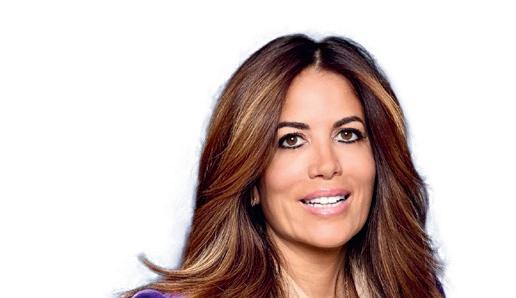
co-investing.” The alignment of interest is a core and recurrent theme at Calista and it is even an “obsession.” It also means that Calista’s professionals will “systematically” co-invest their own personal money with the families should they have a strong conviction on the success of the firm, or in other words, that benefits outweigh the risks.
“We are the opposite of passive [investors]… So, we behave and we think like owners, not like employees.” Mekouar claims openly that more than 40% of her personal assets are allocated to private investments. Questioned whether Calista puts its own capital at risk, she replied with a teaser: “No, not yet for Calista itself.”



MEKOUAR Managing partner Calista Direct Investors



Mekouar observed that the fund industry grew faster than their teams. As a result, fees became a source of pro t for general partners. She concluded that “they cared much less about the performance and then they lost a lot of families.”
Instead of marketing a “2% headline management fee,” Mekouar thinks that it would be advisable for funds to establish a
“cost-based budget.” In other words, she believes that funds should demand a fee that is just high enough to cover running costs because “it enhances alignment and transparency between the GP and the LPs.” This is how she does it when dealing with the families, according to Mekouar.
Calista has a business model based on retainers, which is an upfront fee paid before services have been performed. Then, “we share upsides with the families, if and when the value is created in the company... we are partners,” commented Mekouar. “This is the alignment again; I’m really obsessed with that.”
Onboarding families
“You can’t cold call families. If you do, you will probably hit a wall.” She explained that it is a “very slow” process based on referrals whereby you build the relationship with families “until it naturally fits,” said Mekouar. “The good news is if you do your job diligently, transparently and in an aligned way, they never leave you.”
She stressed that Calista does not sell any products but rather “a network, a team and a methodology.” She does not value success based on the number of mandates, as consulting firms do, but rather on the depth of the relationship with few families with “which we do a lot.”
“The starting point is always the [source of] capital, and not where you put it.”
The strategy of the firm centres around Calista’s clients: the families. “You have to be driven by investors and not by investments… as families are entrepreneurial and different from one another.” She also noted that families are not only sourcing capital, but also 15% to 20% of “high quality” fund and company proposals. She also observed that working with entrepreneurs is challenging as “every day they have a different idea.”
This is the core of Calista’s business as it accounts for two-thirds of the deal flow. There is no standard approach. “We met billionaires who wanted to do business angel tickets, and we met people with €50m [wishing to go] direct only because they love the idea of
backing entrepreneurs.” She thinks that Calista’s role is to create value but also to identify risks.
The investment preferences of the families will depend on “resources, time, familiarity [with the sector] and their appetite for risk diversification.” After having subscribed to a fund, Mekouar noted that families sometimes add co-investments to the mix should they want to increase their exposure to individual companies.
Calista also sources opportunities followed by extensive due diligence to support families in their direct and co-investments. “We are process-oriented, but we leave a lot of slack because the way you do things depends on the situation.”.
Before investing in “directs,” Calista reviews the dashboard to be received by the management and/or helps the management to design key KPIs when represented on the board. She thinks it is a win-win as the process to design a growth strategy “professionalises their effort.” She suggested that Calista’s intention is constructive and aims to “elevate the company, not to overly control it.” Yet again, the goal is to “identify risks upfront.”
“If they asked for one, it’s because [families] feel that they can contribute to create value for the firm… either they have expertise in the sector, or they have a network that [may] help the company… to manage risk and increase performance,” suggested Mekouar.
She does not think that the intention of her families would be to control the firm or to take advantage of it for the benefit of their own businesses. She believes that they know that it is a “time-consuming exercise and it is not for everybody.”
Investing in private asset funds is part of Calista’s strategy, but Mekouar has no plan to run funds. Families may worry about illiquidity, but she thinks that a greater concern relates to fees. She calculates that fees deduct “20%-30% of your return over the fund’s life. It’s crazy.”
Calista tends to stick with funds in highly specialised sectors such as space
52.2 %
Asset allocation to alternatives as a % of assets under management in 2023
Among all asset owners, family offices show the greatest interest in alternatives, which include PE, private credit, VC/growth, hedge funds, real estate, infrastructure and operating businesses, according to KKR, Willis Towers Watson CommonFund and Capgemini.
tech, but also funds backed by families and entrepreneurs as she sees strong alignment of interest. “If a family wants to invest in big funds like KKR or Carlyle, I say, go to moonfare.com.”
As a case in point, they invested in a fund managed by AlleyCorp which was set up by a “established” entrepreneur. “The fund is $230m. He put $100m of his own money [in it].” Calista considers the relation with the latter as a partnership.
Elsewhere, she discussed a $150m US healthcare fund set up by a family where the management team invested $55m of their own money. “We love this because there is skin in the game.”
Similarly, Mekouar invested in a secondary fund at Swiss-based Unigestion, which is backed by a family. She justified her investment by arguing that they like to speak with peers. “We do not like investing in a bank-sponsored fund.”
Alignment of interest increases the likelihood of success, but may also fuel overconfidence. Understanding the context and the motivation of the stakeholders remain key.
Calista draws upon the experience of John Holloway, a 40-year industry veteran and former director at the European Investment Fund, who selected venture capital funds and is often referred to as the godfather of venture capital in Europe. Mekouar explained that Holloway probes the “solidity of the investment thesis for funds” being reviewed by Calista. Besides, he helps shape the story of family funds such as AlleyCorp fund.
When it comes to monitoring its portfolio of funds, she admitted that it is “hard to be active.” During the due diligence process, Calista assesses whether the GP will be upfront with quality information and reporting. “The family investors don’t mind the risk but hate to suddenly be faced with an issue that was not talked about earlier and be confronted with a fait accompli.”
Loans against NAV: to use in moderation “Families don’t like it too much.” Yet she thinks that if done in “moderation” to finance acquisitions, for instance, it would be acceptable as a temporary measure. Otherwise, families see these operations as boosting return artificially through leverage.
Rajaa Mekouar is a financial entrepreneur and PE investor with 25 years of expertise in private markets worldwide. She has held positions as an LP with family offices in the UK and throughout Europe, and as a GP in many midmarketfocused funds. Calista Direct Investors, an independent buyside advice and coinvestment platform chaired by Serge De Ganay, was founded by her and she serves as its CEO. The company’s focus is on private markets and acts as an outsourced transaction team for single family offices. Mekouar serves on the boards of numerous businesses that the Calista families have invested in. She relocated in Luxembourg in 2016 and became citizen. In 2020, she was named an “Inspirational Woman in Finance” and served as the LPEA’s leader from 2018 to 2020. There, she introduced the LPEA Insights conference series and the Women in PE platform, PE4W.
Mekouar thinks that families prefer to wait for longer to achieve a certain multiple on their investment. “They want to get real value creation stories.” Consequently, it comes as no surprise that they “tend to think more in multiple terms than in IRR.”
Retailisation of PE investments is a step too far
Mekouar spoke highly of Moonfare, a private market fund platform, as a tool to invest between €50k to €500k in funds as “they do the selection… [and] have access to top quartile fund performance” while doing “high level checks with a bit of due diligence.” She invested in 2019 with a family “when the company had €80m in AUM.” It now oversees €3bn.
However, she commented that her families are more institutional in terms of investment firepower. Moonfare aims to write bigger tickets. She is therefore working at building synergies with Moonfare by automating Calista’s platform to give the former access to her families. In return, she expects her direct investments to find their way to the Moonfare platform. She thinks that both firms are complementary.
PE investments, argued Mekouar, are “not for mom and pop on the street.” She is not convinced about the appropriateness to go “very low” on the minimum threshold. Moonfare recently launched an Eltif with a minimum investment of €10,000.
The Calista club: families have more for their money by paying a fixed fee
As not all the families have a full-time team overseeing their investments, Calista set up a package outside a legal structure--it is not a common investment vehicle— aimed at mutualising the deal flow, research due diligence and events. “They feel they’re amongst peers, there is a community spirit, and there’s no one selling anything to them.”
She stressed that families may invest in the same deals, yet they are “entrepreneurs… control freaks, they like independence [and feeling like] they’re different.”

















In today’s specific market environment, Echiquier World Equity Growth stands out for its robust performance. Anticipation and discipline remain the golden rules for this strategy.

Louis Bersin, CFA, International Equity Portfolio Manager, LFDE
Over the past years, the US economy has proven more resilient than expected. Since the market rebound at the end of October 2023, the rally has been led by a dozen stocks, including the Magnificent Seven except for Tesla, affected by declining orders for several of its flagship models. Echiquier World Equity Growth, La Financière de l’Echiquier’s (LFDE) quintessential conviction-driven strategy, with assets under management over 1 billion euros1, continues to demonstrate its resilience in today’s particularly unusual market environment.
Managed on the basis of strong convictions, the fund focuses on around twenty international stocks with market capitalisations above 10 billion dollars. Our best ideas lead to our best long-term
investment opportunities: this is one of the investment team’s golden rules and the reason why the fund’s top 10 holdings account for over 60% of its net assets. Companies are selected for their quality fundamentals and resilient growth; they are also exposed to robust long-term mega-trends. The fund has maintained its cautious view on the economic cycle and invests principally in secular growth or defensive stocks.
Around 68% of the fund2 is exposed to either “secular growth”, or companies driven by powerful long-term trends and that are rather resilient in periods of economic slowdown, or to “defensive growth” stocks that are less sensitive to the business cycle and
able to grow despite a challenging economic environment. Since the beginning of 2024, semi-conductor companies - Nvidia, Taiwan Semiconductor - as well as tech stocks such as Amazon and Microsoft, were the fund’s top performers after reporting excellent quarterly earnings supported by the growing adoption of AI.
Our objective is to maintain our valuation discipline, while marginally repositioning the portfolio in favour of more defensive growth strategies. We trimmed our position in Nvidia, which became the world’s largest market cap in the middle of June 2024, as well as our exposure to the tech sector, which we had strengthened after fears of a recession eased.
Technological and disruptive innovation is a long-term growth factor; it also creates the mega-trends we seek to expose the fund to. These include digital transformation, e-commerce, and new economic hubs. We believe that technology will remain a core concern as it helps address a fundamental economic problem: the ageing active population. Indeed, the active population is expected to fall from 75 million workers in 2020 to 55 million by 2050 in Japan, from 1 billion to 840 million in China, and from 485 million to 405 million in Europe3. A diminished workforce will require greater productivity from each individual worker - which will necessitate technological solutions. The US companies that have spearheaded key trends such as digitalisation and AI have understood this well. Microsoft and Amazon alone are expected to spend more than 100 billion dollars in IT investments. The world’s other regions cannot compete with the American fire power. The fundamentals of AI are intact, in our view. The euphoria of recent months has given way to careful earnings forecasts, requiring reasonable valuations. This change - that occurred in the summer - enabled tech industry stock prices to pause for breath. Once valuations become more reasonable, we expect the AI theme to move back to centre stage. Another long-term trend is de-globalisation. As demonstrated by the Covid pandemic, countries that were unable to manufacture a five-cent surgical mask had to shut down their economies. Supply chain resilience has become a strategic imperative; efficiency is no longer the sole objective - as had been the case for the past 30 years.
Many emerging countries have conducted major reforms that have reduced their

dependency on commodity prices. This was the case in Mexico - one of our strongest investment convictions - which went from a country exporting oil and copper to a manufacturing hub, close to the US. This provided the Mexican economy with an opportunity to exceed most European and Asian markets by a wide margin in US dollar terms over the past three and five years. After a strong run in 2023, emerging country stocks have corrected since the beginning of 2024. Examples include consumer companies, such as Walmart de Mexico, a key player within the Central American retail industry. These emerging stocks display quality fundamentals and have therefore been kept within the portfolio.
In Mexico, at the beginning of June, markets experienced a surge in post-election volatility. The Mexican peso lost 10% and the stock market fell sharply for two weeks. However, investors regularly make the same mistake with Latin America. They consider that a left-wing party victory implies a Venezuelan Hugo Chavez-style regime, including the nationalisation of private assets, hyperinflation and wiped-out investors. Mexico provided its own example with Andrés Manuel López Obrador (AMLO)’s victory in 2018. When markets corrected sharply following his election, overlooking his accomplishments when running the city of Mexico - notably in terms of tax collection efficiency, this was also an opportunity for investors. The former mayor of Mexico, Claudia Sheinbaum, is following
in AMLO’s steps. Rather than giving into the irrational fears triggered by her victory on June 2nd, it seems investors would be better advised to leverage market volatility. This is one of our team’s golden rules: to take advantage of an exogenous correction as long as corporate fundamentals remain strong.
1 LFDE at 30.06.2024
2 At 30.06.2024
3 2019 World Population Prospects Report, UN
Disclaimers: Past performance is not an indication of future performance. The securities are cited as an example. The information and data are provided by LFDE for information purposes and do not constitute an offer to buy or sell a security, investment advice or financial analysis. Neither their presence in the portfolio nor their performance are guaranteed. The opinions expressed are those of the manager. LFDE cannot be held liable for these opinions. The fund is primarily exposed to the risk of capital loss, equity risk, currency risk, interest rate and credit risk, discretionary management and sustainability risks. For more information on its characteristics, risks, and costs, and before investing, please read the regulatory documents available on www.lfde.com.
Guest contribution Stéphane Pesch
The CEO of the Luxembourg Private Equity and Venture Capital Association (LPEA) outlines how “operational excellence and improvement” will influence the sector.
Words STÉPHANE PESCH
Private market funds, due to their longterm horizon and resilience, tend to experience more gradual changes rather than impulsive reactions to market conditions and cycles. This may facilitate the identification of future trends and help the industry to better integrate certain transformations and changes, which will accelerate even further in 2025.
This is actually a recurring exercise that guides us through the preparation of


STÉPHANE PESCH

(LPEA)
“ When you manage a fund, it is crucial to manage it well and with all the required agility and quality”
our annual agship event the “Insights” conference, during which we ask ourselves what will most impact our members in the coming months.
One of the main focuses for 2025 will be operational excellence and improvement. When you manage a fund, it is crucial to manage it well and with all the required agility and quality; ine ciencies, mistakes and redundancies can increase your costs and reduce your performance, which then may impact your fundraising activities in the future. Today, there are more than 4,000 funds out there marketing to investors, three times as many as there were in 2019. By enhancing the e ciency of your portfolio companies and management company, investment structures will undoubtedly create some additional value and increase the productivity of your activities and fuel their growth.
“PE tech”
This is one of the reasons why more and bigger funds have been launched in Luxembourg with an increasing average fund size from €1bn to €1.5bn in only three years. When you are a smaller manager you will most likely be looking for tools that will help you navigate the complexities of fund administration, investor reporting and other requirements --areas in which many new “PE technology” rms are o ering solutions. Their services will also continue to expand and cover most of the outsourcing needs.
AI also has an important role to play. Although we are still in the early stages of its adoption in the industry, we expect
many new developments next year with concrete, embedded solutions dedicated to managers, their service providers and also internally upgraded processes. Private equity managers are used to digitalising their portfolio companies and now the time has come to apply the same to their own structures and operations.
The most successful private capital managers systematically and repeatedly identify and acquire robust target companies, transform them, create value and return the performance and capital to their investors before launching their newest structures. In recent years, the client base of private funds has expanded beyond pension funds and other institutional investors to include family o ces and high-net-worth individuals.
What we already see today, and expect to see even more in 2025, is the launch of new investment products which will allow access to retail investors. These products will use di erent structures (Part II, Eltif) and integrate varied mechanisms or clauses (investment, divestment, valuations) in order to maintain the right level of transparency, investor protection and returns.
The expansion to retail investors represents a major shift in the industry, since this new pool of investors will need to be properly educated about private market funds and markets. This represents both a challenge for the managers, asset servicers and intermediaries, but also a significant opportunity for them and the interested investors who want to gain exposure to an asset class that has historically been inaccessible.
Monterey Insight has conducted research, exclusively for Paperjam, on how frequently investment funds switch service providers. The firm’s analysis of data from 2019 to 2023 yielded an “affinity” score, indicating which service providers retained the most funds as clients, and which asset classes were most likely to move their business. Separate from the study, this section includes comments from Alan Dundon, president of the L3A trade group, on what he thinks makes a great alternative fund service provider.
Paperjam has partnered with Monterey Insight, the London-based fund industry research firm known for its annual service provider rankings. Monterey Insight analysts have shared previously unpublished Luxembourg figures from its database on the “affinity” (or client retention) rates for fund service providers.
Words AARON GRUNWALD
Fund administrators, custodians, transfer agents, management companies (mancos), auditors and legal advisors play a key role in keeping investment funds ticking (and play a key role in Luxembourg’s funds ecosystem). Naturally, they all want to grow their business but must invest heavily to onboard new funds.
Which begs the question, how often do investment fund rms switch service providers? Monterey Insight attempted to answer that question by examining its proprietary database of Luxembourg fund service provider relationships (see graphic on page 71). It has shared the results of its “a nity” research exclusively with Paperjam.
“We performed this quantitative analysis to understand whether funds changed service providers between two sample dates--31 December 2019 and 31 December 2023--and which service providers lost or gained the most funds between these sample dates,” according to Karine Pacary, managing director of Monterey Insight. “We are using the term ‘a nity’ to describe it.”
“Asset allocations with a greater number of sub-funds had a lower affinity than the those with fewer”
“There are many factors which impact affinity but this quantitative analysis attempts to provide some insight into which service providers perform the best-defined as retaining more funds--and those that fare less well,” Pacary explained. “Qualitative factors that are not considered but worth exploring are: level of expertise, quality of service, value for money and quality of support of technology platforms.”
Similar and dissimilar a inity rates







KARINE PACARY Managing director Monterey Insight










“Within the service provider landscape, we found similar a nity rates amongst admins (87% a nity), transfer agents (87% a nity) and custodians (89% anity). Standing out of the group lie the mancos/AIFMs, who had an average a nity of 94%. We have excluded auditors because they are subject to the mandatory audit firm rotation law, which require funds to change auditors every 10 years.”







“Amongst administrators, private equity/venture capital, property/real estate and alternative investment
Funds tracked by Monterey Insight, at year end
Source Monterey Insight
Regulated funds include Ucits, Sif & Sicar structures; unregulated funds include Luxembourg limited partnerships, Soparfi and Raif structures. Non-domiciled funds serviced from Luxembourg not tracked prior to 2021. Unregulated funds not tracked separately prior to 2018. Data for 2018 and 2019 may not reflect all unregulated funds. This chart indicates the number of funds and sub-funds in Monterey Insight’s database, not actual growth in the market.
10,000 5,000 20,000 15,000 25,000 0
Total regulated
Total unregulated
Non-domiciled (serviced from Luxembourg)
showed the least affinity (average 78%),” she told Paperjam. When it came to retaining mancos/ AIFMs, custodians and transfer agents, private equity/venture capital, property/real estate and alternative investment funds “were all in the lowest--fourth and fifth--quintile of affinity. One possible reason for this is the number of individual sub-funds in these investment strategies is much greater than the other strategies. Indeed, we found that asset allocations with a greater number of sub-funds had a lower affinity than the those with fewer.”
Pacary said she was most surprised by the fact that “private equity/venture capital, private debt and property/real estate funds are more likely to change administrators than equity/bond funds. Interestingly, these private asset funds are more likely to be unregulated than regulated: 70% unregulated vs 30% regulated.”
The firm did not speculate on the reasons for this gap. Whether or not that means the managers of unregulated fund structures (like Luxembourg limited partnerships, Raifs and Soparfis) are more nimble decision-makers or simply more cost-conscious could not be teased out by Monterey Insight’s research.
Listed by quintiles
Monterey Insight provided Paperjam with two sets of affinity results. The first set lists companies in the top three quintiles by service provider type (see graphic on page 74). Each company’s specific affinity score remains proprietary, so Monterey Insight has presented these results by quintiles that represent the distribution of affinity. Due to the distribution of data, when it comes to administors, for instance, the quintile thresholds were, from 1st to 5th respectively, 100%, 96%, 94%, 89% and 78%.
The second set looks at collective affinity rates across all funds tracked in an asset classes (see graphics on page 76 and 77).
Finally, Monterey Insight has provided its annual service provider rankings, both for all funds (see graphic to the right) and solely within the private market fund universe (on the page opposite).
For all Luxembourg-domiciled funds, as of 31 December 2023
Top Luxembourg private market fund service providers
Combined ranking of all private asset funds serviced from Luxembourg, as of 31 December 2023
Alter Domus Citco
Caceis
Aztec Group
Caceis Citco
BNP Paribas
BNY Mellon
Alter Domus Citco
Caceis
Aztec group
Alter Domus
Caceis
Citco
Aztec Group
Caceis
BNP Paribas Citco
BNY Mellon
Alter Domus Caceis Citco
Aztec Group
Deloitte KPMG
Arendt & Medernach
Loyens & Loeff
Elvinger Hoss Prussen
Clifford Chance
Deloitte
Arendt & Medernach
Elvinger Hoss Prussen
Loyens & Loeff
Clifford Chance
Monterey Insight provides an annual ranking of the largest fund promoters/initiators, management companies/alternative investment fund managers, administrators, custodians/depositaries, transfer agents, auditors and legal advisors in Luxembourg, by net assets under management or administration.
Source Monterey Insight
Luxembourg fund service providers that placed in the top three quintiles for client retention between 31 December 2019 and 31 December 2023
Source Monterey Insight
1st quintile
• Bayerninvest Luxembourg
• Citibank
• Hedgeserv
• Mizuho Trust & Banking
• Navaxx
• Northern Trust
• Société Générale Securities Services
• State Street
• Spuerkeess
• Citibank
• EFG Bank
• Hauck Aufhäuser Lampe Privatbank
• Mizuho Trust & Banking
• Northern Trust
• State Street
• UBS Europe SE
• Citco
• Citibank
• Hauck & Aufhäuser Fund Services
• Hedgeserv
• HSBC
• Mizuho Trust & Banking
• Northern Trust
• Société Générale Luxembourg
2nd quintile
• Adepa
• Aztec Financial Services
• BNY Mellon
• Brown Brothers Harriman
• Citco
• Hauck & Aufhäuser Fund Services
• Pictet & Cie
• Universal Investment
3rd quintile
• Alter Domus
• Amicorp
• BNP Paribas
• Caceis
• Edmond de Rothschild Asset Management
• HSBC
• J.P. Morgan Bank
• JTC
• United International Management
• Banque de Luxembourg
• Brown Brothers Harriman
• Citco
• Quintet Private Bank (Europe)
• Skandinaviska Enskilda Banken
• Société Générale
• BNP Paribas
• BNY Mellon
• DZ Privatbank
• Edmond de Rothschild (Europe)
• ING Luxembourg
• IQ-EQ
• JPMorgan Bank
• Pictet & Cie
• Attrax Financial Services
• Aztec Financial Services
• BNP Paribas
• Brown Brothers Harriman
• JTC
• Navaxx
• Pictet & Cie
• Alter Domus
• Amicorp
• BNY Mellon
• Edmond de Rothschild Asset Management
• IFDS/State Street
• IQ-EQ
• UI EFA
Services
• Andbank Asset Management
• Bayerninvest Luxembourg
• Bil Manage Invest
• Candriam Luxembourg
• Deka International
• Engelwood Asset Management
• Fondaco Lux
• Gérifonds (Luxembourg)
• Japan Fund Management (Luxembourg)
• MC Square
• Natam Management Company
• Nord Est Asset Management
• Pharus Management Lux
• GAM
• Adepa Asset Management
• Alter Domus Management Company
• Axxion
• Carne Global Fund Managers (Luxembourg)
• Fundpartner Solutions (Europe)
• Funds Avenue
• Hauck & Aufhäuser Fund Services
• Universal Investment Luxembourg
• Arendt & Medernach
• Ashurst
• Chevalier & Sciales
• DLA Piper
“Within the service provider landscape, we found similar affinity rates amongst admins (87% affinity), transfer agents (87% affinity) and custodians (89% affinity).
KARINE PACARY Managing director Monterey Insight
• A&O Shearman
• Baker & McKenzie
• Elvinger Hoss Prussen
• Van Campen Liem
• Clifford Chance
• Fieldfisher
• Linklaters
• Loyens & Loeff
We have not included statutory auditors in this table due to the mandatory auditor rotation rule, which requires funds to switch auditors at least every 10 years. Affinity scores could be artificially influenced, and thus not be truly indicative, by the more or less random factor of where firms fall in their rotation cycle.
Monterey Insight is a fund industry research outfit providing market intelligence reports on the UK, Jersey, Guernsey, Ireland and Luxembourg.
To produce affinity rates, it screened its proprietary database for service provider contracts. Monterey Insight analysts included all the funds that remained with the same service provider between 31 December 2019 and 31 December 2023. The firm only included third-party funds, excluding in-house funds (which presumably would have stayed with their sister firm in any case) that could have skewed the results. To ensure a level playing field, analysts excluded new funds and service provider mergers. All qualified service providers are Luxembourg-based and have more than 10 funds/subfunds listed under their Monterey Insight database entry as of 31 December 2023. An affinity rate of 83.45%, for example, means that a service provider retained 83.45% of the fund/subfund mandates that they held on 31 December 2019 until 31 December 2023.
Regulated funds are slightly more likely to stick with their service providers
Source Monterey Insight
Administrators
Mostly regulated*
Mostly unregulated**
Custodians
Mostly regulated*
Mostly unregulated**
Mostly unregulated** Transfer agents
Mostly regulated*
Management companies
Mostly regulated*
Mostly unregulated**
Mostly unregulated** Auditors
Mostly regulated*
Mostly regulated*
Mostly unregulated** Legal advisors
* Bonds, equities, exchange-traded funds, index-tracking funds, mortgage-backed securities, short-term cash and other public asset funds. 94% of the funds in this group have a regulated structure, such as Ucits`
**Private equity/venture capital, property/real estate, private debt and other private asset funds. 70% of the funds in this group have an unregulated structure, such as a Luxembourg limited partnership, Raif or Soparfi
Service provider retention rate for selected asset classes, 2019 vs 2023. Highest and lowest listed, among asset classes with at least 30 funds in sample period.
Source Monterey Insight
Guest contribution Alan Dundon
The head of the Luxembourg Alternative Administrators Association (L3A) shares five pillars for success in the private market fund ecosystem.
Words ALAN DUNDON
I’m often asked, “What makes a great alternative fund service provider?” The response isn’t as obvious as it might rst appear. The word that complicates things the most is “alternative”--without that, responding to the question for the more traditional retail fund administrator is much easier, and would largely revolve around having the right detailed processes and big enough systems to handle the huge volumes involved.
When talking about alternative fund administrators, it’s very di erent. Before expanding further, let’s rst be clear on

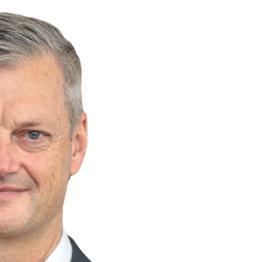

(L3A)
“ Alternative funds may only see a handful of largescale transactions in any one year”
what we are talking about when we speak of “alternatives”, particularly in the context of Luxembourg and the members of L3A. Broadly, alternatives refer to private equity, real estate, infrastructure and private credit asset classes.
The nature of such alternative investments, often referred to as “real assets”, is for transaction sizes to be large in size and as a result, the volume of transactions relatively low. Whereas in retail funds, there may be tens or hundreds of transactions in a day, alternative funds may only see a handful of large-scale transactions in any one year as the fund invests and disposes of assets. This results in transactions which are unique to the particular investment itself, giving less opportunity to automate and process in a standard way.
With this in mind, there are a number of factors which contribute to the eciency and e ectiveness of alternative fund service providers. These can largely be boiled down to the following: Quality of operational team: Given the nature of the business as described above, any “great” provider will need to hire the best operational resource--people experienced in the asset class and demonstrating an in-depth understanding of the client’s business and investment operations.
E ective use of technology: Though investment asset volumes are low, the volume of data points and transactions linked to such assets is often huge in scale. This requires use of systems dedicated to the asset class and e cient in
processing and recording the data needed by investment manager clients and their investors. Great providers will dedicate a significant part of their investment budget to acquiring and developing the best systems.
Access to underlying data: Increasingly over the last years, clients are looking to administrators to provide them with the data they need to satisfy their investors who have become increasingly demanding, particularly in relation to performance and risk data and reporting. The best administrators have understood the need to source and provide such data.
High-end reporting : While the asset class has been historically opaque, investment management clients are increasingly looking for more in-depth and frequent reporting which they can provide to their end investors, similar to what has been the case on retail funds for many years. Great administrators will leverage their extensive technology stack and often build bespoke reporting delivered through client dedicated web portals.
Relationship management: Finally, the complexity of the asset class and associated structures requires great administrators to assign great relationship managers to their clients, capable of closely monitoring service levels, ensuring that service potential is maximised and e ectively addressing the inevitable issues that arise on assets as complex in nature as alternatives.
Alternative providers strong in all the above are, and will continue to be, the greats of the industry!
Luxembourg is undergoing a process of continuous transformation as an international financial centre. By 2035, Luxembourg’s economic landscape will have evolved considerably, driven by technological innovation, evolving customer expectations and shifting global trends. What will our financial marketplace look like in a decade’s time?
Ten experts offer their views on the future of finance in Luxembourg.
With the participation of Professor Gilbert Fridgen (SnT), Ala Presenti (Moniflo), Candi Carrera (36 Square Capital, Spain), Stéphanie Delperdange (Independent Director), Simon Schwall (OKO), Emilie Allaert (Digital Minds Sàrl), Markus Sauerland (NowCM Luxembourg), Claude Marx (CSSF) Isabelle Delas (LuxFLAG) and Nicoletta Centofanti (Luxembourg Sustainable Finance Initiative).


Alternative investment fund management is experiencing a period of intense changes in line with macroeconomic developments, and this is affecting both private market fund structures and operating models.
Qing Yang, Head of Alternative Funds Services, Societe Generale Securities Services Luxembourg
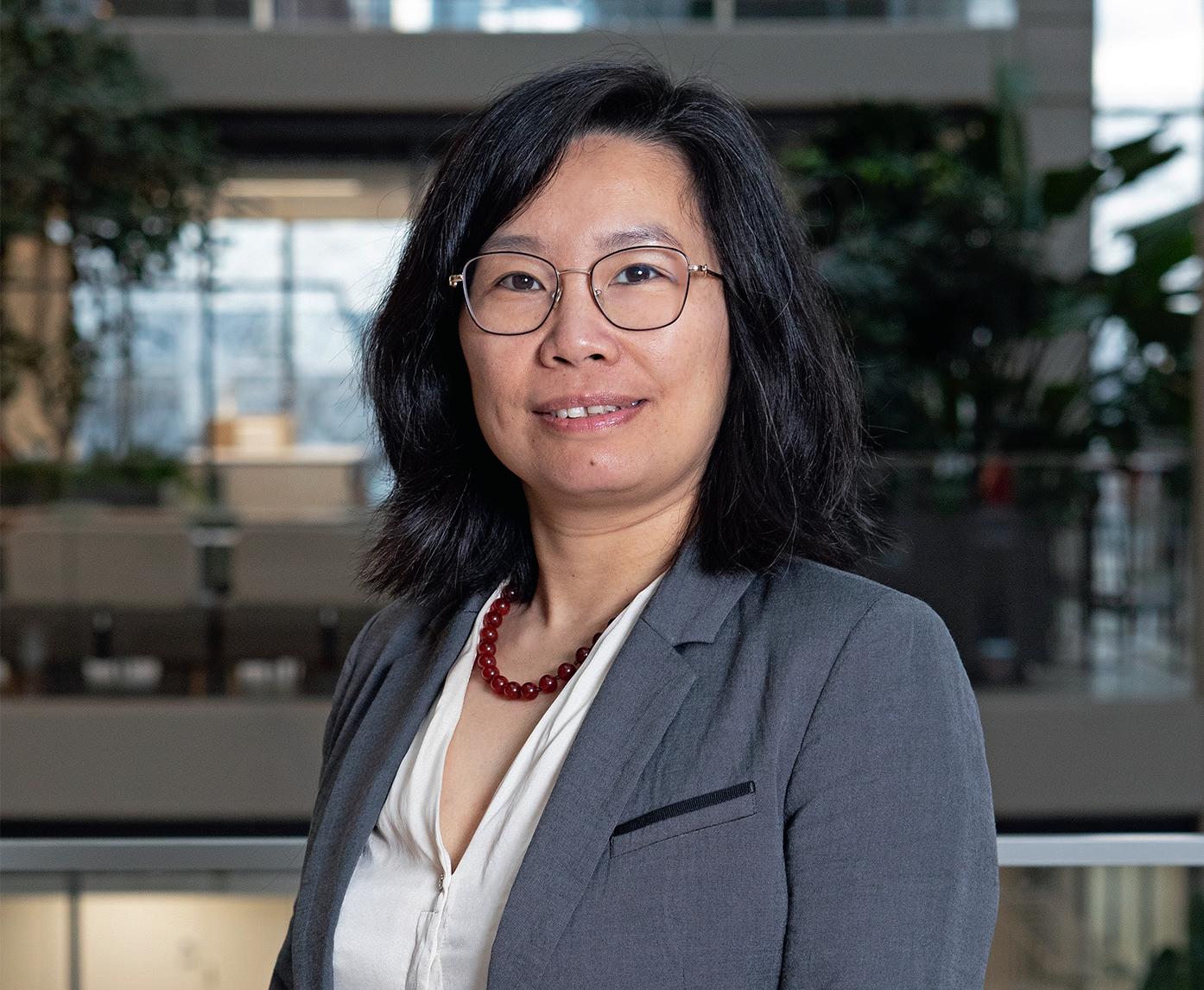
Since 2022, alternative investment fund (“AIF”) management has faced an increasing complexity due to a great number of factors, namely an uncertain geopolitical context, a higher economic risk in several sectors, a higher difficulty in executing traditional exit strategies (e.g. a slowdown in IPOs1), the rising rates (March 2022 to July 2023 saw an average cumulative rise of over 525 points in the US, EUR and UK zones2), and the tightening of financial belts in the private sector (private market fundraising fell by 22% on the global market in 20233).
As a result of these statements, the AIF industry is shifting to a more diversified model:
— On the assets side, investments are progressively moving towards private debt as
well as towards more traditional investments such as listed shares and bonds; — On the liabilities side, AIFs are becoming more accessible to attract retail clients into private equity investments.
Loans have become the most attractive assets for AIFs at a global level, experts are expecting private debt to raise funds around USD 3,500 billion by 2028, while in Europe it is estimated that the private debt market will grow by more than 200% between 2022 and 20284.
In addition to a more appreciable and consistent profitability, driven by rising rates on the main markets and more regular
liquidity flows, the variety of debt products allows to have a wide choice of investments suitable for different fund strategies.
Funds can choose to originate or participate in loans that finance primarly offerings from private companies (the private equity approach), or to select loans on a secondary market. For more effective interest-rate strategies, funds can also add listed bonds and derivatives to their portfolios.
These choices are made possible by: — Relaxed regulations that are supposed to encourage non-bank financing in the real economy. For example, ELTIF 2 allows funds to hold 45% in listed products, whereas AIFMD 25 clarifies the rules for AIF loan origination within the European Union. — Changes to the ecosystem: including the development of “loan administration” functions to lighten the load on fund-level loan monitoring, or, moreover, the move towards greater transparency in the secondary market as a result of the platformisation (the WSO network in particular).
These adaptations will have a lasting effect on how the AIF industry develops, bringing greater flexibility and tools to help the sector adapt to steady market changes. Funds will hold onto their expertise in the private sector while moving closer to more traditional asset management. The regulatory framework will also permit greater leeway in fund structuring. For instance, under AIFMD 2 the threshold for investment in private loans only accounts for 50% for an AIF wishing to be classified as a “loan origination fund”.
On the liabilities side, the same trends for a greater flexibility and accessibility have been recorded. Asset managers and regulators are gradually turning to a retail customer base to broaden long-term funding sources for private companies and the economy overall.
The ELTIF 2 regulation gives a clear signal of this shift by completely removing the investment threshold for retail investors. ELTIFs can also use a European Union marketing passport for this purpose.
As they distance themselves from traditional closed-ended funds, fund managers are working on their new marketing strategies, by enhancing the emphasis on partnerships with some distribution channels such as private banks. Digitalising product offerings has also become a necessity to promote access for retail customers.
This also means changing product structures to meet the more stringent liquidity requirements for retail customers. As a
EUROPE-FOCUSED PRIVATE DEBT ASSETS UNDER MANAGEMENT ($BN) BY SUB-STRATEGY
Direct lending Distressed debt
result, we are seeing more and more portfolio compartments dedicated to liquid assets and the introduction of liquidity mechanisms (such as “gates” and “anti-dilution levies”) historically used by UCITS funds for subscriptions and redemptions. These usages of liquidity tools is even “imposed” by AIFMD 2 regulations.
These trends are, furthermore, driving profound changes throughout the AIF management ecosystem. Platforms such as Goji and AirFund, for example, have been acquired by fund industry giants (Euroclear and Amundi respectively), targeting consolidation in private fund distribution and processing.
A question is emerging among fund administration service providers: how can we better equip ourselves in order to support alternative funds that are evolving in terms of both their investments and their marketing methods? There are two challenges to be faced: one is technological, to contribute to the sector’s industrialisation (in connection with platforms, investor volumes, etc.) and the second one is organisational, to enhance our service offering (with new loan administration functions and liquidity management tools).
Here at Societe Generale Securities Services in Luxembourg, we’re backed by our
stable institutional customer base, and we’ll continue to reflect on these topics, as well as to work together to create innovative services tailored to our customers’ needs. We’ll build all this while maintaining our current expertise both as a custodian bank offering cash solutions and as a central administrator for alternative funds.
1 — In 2023, the international market saw 1,298 IPOs, raising a total of USD 123.2 billion. This represents a fall of 8% in volume and 33% in the total amount raised compared to 2022 (source: Café de la Bourse).
2 — Source: Bain & Company.
3 — Source: “McKinsey Global Private Markets Review 2024: Private markets in a slower era”.
4 — Source: Prequin.
5 — Transposition scheduled for 2026.
Societe Generale Luxembourg: Sandrine BREL
sandrine.brel@socgen.com





CHRIS
ADAMS
Principal and head of business development for alternative funds
Brown Brothers Harriman
We believe that one of Luxembourg’s greatest strengths is the regulatory environment governing the private markets fund sector. We see it as the foundation of the industry’s success, providing opportunities for managers, investors and service providers alike.
It’s true that Luxembourg is not a low-cost location, but the bigger challenge, and one that is not unique to Luxembourg, is the competition for talent. Our industry requires specialist expertise, which means there is a lot of demand for strong candidates with the right skill sets. Whilst great strides have been made in recent years, it is critical that we strive to maintain and build on Luxembourg’s position as an attractive location in which to live and work.
KARIM BOUSSETTA
Regional director France & Benelux
Moonfare
Luxembourg is usually top of mind when we think about private markets. Almost every major player has a presence there, which makes Luxembourg a key hub in the industry. The availability of top-tier funds is one of its biggest strengths, and Luxembourg’s o erings really show what it's all about. The sector has seen incredible growth over the past few years and is set to keep expanding.
Luxembourg doesn’t have any major weaknesses in the private markets fund sector, but there is still room to grow. By expanding its workforce, it could push the industry even further to the forefront of its economy. This would help Luxembourg become an even bigger player in Europe and globally, especially as regulations, politics and nancial policies tighten in France, the Netherlands, Belgium and the UK.












PIERRE FESTAL Partner Promus Ventures
The country’s expertise in fund structuring and access to EU-wide capital markets, coupled with institutional support and government initiatives, is Luxembourg’s forte. We also bene t from a robust regulatory framework and a well-established nancial services ecosystem, fostering transparency and collaboration among players.










While Luxembourg has made strides in cultivating a thriving nancial ecosystem, the depth of local innovation in deep-tech sectors is still developing. With the proper focus on nurturing local innovation and expanding talent resources, I trust Luxembourg to overcome this challenge and position itself among the leading tech hubs in Europe.
We asked nine experts in Luxembourg--specialising in various domains, from infrastructure to distribution--about the greatest strengths and weaknesses of Luxembourg’s private market fund sector at the moment. Here’s what they had to say.
Words LYDIA LINNA


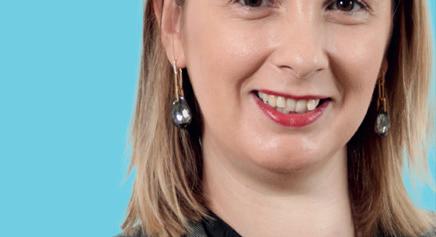




CLAIRE GERAULT Managing director Blackstone
Blackstone and its a liates have been in Luxembourg since 2002. In that time, we’ve seen it evolve into an international hub for alternative investment funds and solidify its position as a leading destination for private markets. Its strong regulatory and business landscape has long attracted asset managers, and the introduction of innovative products such as Raifs and Eltifs has only reinforced its appeal. Luxembourg particularly stands out thanks to its versatile fund structuring toolbox, such as SCSPs and UCI Part IIs, and the CSSF’s adoption of new European products like Eltif, demonstrating its adaptability and readiness to embrace new opportunities. The country maintains a competitive advantage through its strong support system ranging from niche to bigname providers, and investors will remain committed to the country.
DAVID HARRISON
Managing partner and CFO Marguerite
From an infrastructure fund manager’s perspective, Luxembourg's robust legal framework and consistent policy-making processes, together with the country's stability, foster condence and predictability, essential in our line of business. Additionally, easy access to a wide range of service providers facilitates e cient investment management and operations.
The only downside, from the perspective of an infrastructure investor present in 15 other European countries, is that we have yet to identify an infrastructure asset in the local market that aligns with our portfolio strategy. We remain hopeful, however, that future opportunities will materialise, allowing us to take full advantage of Luxembourg's stable and supportive business landscape.


































ALESSIA LORENTI Independent non-executive director & advisor
Well before the AIFMD implementation just over 10 years ago, Luxembourg had developed a strong expertise in the private capital asset class as domicile of choice for asset holding vehicles, with an in-depth understanding of the transaction peci cs and life cycle. The attractive investment fund toolbox is particularly well adapted to private market funds. The Raif and Luxembourg limited partnership have proven very successful.
Luxembourg’s wealth of experience in private market funds and cross-border distribution provides a solid foundation for the developments in the retailisation of private assets via Eltifs.








Partner, private equity & private debt EY Luxembourg
Who would have bet 20 years ago that the Sicar Law would be a turning point in the private funds industry. Since then, from Raifs to limited partnerships, Luxembourg has shown its ability to adjust to its changing environment. It has established itself as the second largest funds’ platform in the world without selling its soul, thanks to a delicate balance between pragmatism and responsible governance, at the international and local levels.
The emergence of sustainability is a fantastic opportunity for Luxembourg. Bene ting from the existing traction of the Luxembourg Green Exchange, the grand duchy has a unique chance to also become the leader on green private debt funds and doing so, to be the European pole of attraction for the emerging talents of sustainable nance.
Head of operations, fund administration Ogier Global Luxembourg
Luxembourg stands out for its political and economic stability, supported by a stable regulatory framework o ering exible solutions. Its robust nancial infrastructure and attractive tax system bene t various entities. With a strategic European location and a multilingual workforce, Luxembourg excels in cross-border fund distribution, in uencing fund managers’ decisions.
However, the favourable regulatory landscape is complex and can be daunting for newcomers, requiring signi cant time investment. Additionally, operational and setup costs, including legal, administrative and compliance services, are higher than in other competitive markets. Choosing the right partner in the corporate and duciary space, with local expertise, is crucial for e ectively navigating the market.



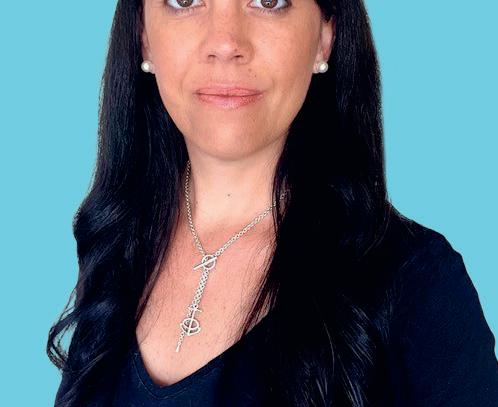
PAULINE ROUX
Vice president, legal counsel
AllianceBernstein
A pioneer in the European fund industry, Luxembourg was the rst country to implement the EU directive on Ucits in 1988. It has, over time, become a prime location for private asset funds, particularly with the implementation of the AIFMD in 2013. Private asset managers who set up funds in Luxembourg also bene t from a large corporate and regulatory toolkit. Funds can be set up under a range of forms, and the legal environment is exible and adjusts to market needs.






While I cannot think of a weakness speci c to Luxembourg, I’d prefer to highlight areas of improvement for the EU market generally. Tax requirements vary between EU countries, and it could be bene cial to harmonise investor’s taxation in case of transfers, distributions and when selling interests of funds. Distribution of private debt funds to retail investors has also become a key point and the EU market could bene t from better harmonisation.

Nicolas Milerioux, head of VC at Encevo (part of the group that includes Enovos), told us about his first investment and what he has learned since.
Words JEFF PALMS
Tell us about your first investment. It was in energy efficiency, a company headquartered in Spain. Optimitive. That was in December 2013. It was the rst one I did as a VC, working at GGM. We invested €1.14m. And it was a hectic one because we had no prior experience in crafting VC deals as a team. We didn’t have the right documentation or processes… but we did have a legal counsel working with us, assisting us with what to put in the contract.
Interestingly, with Encevo in 2019 I invested in another company in the same eld with a similar business model: Energiency. That was my rst investment with Encevo and rst exit with Encevo as well. It was really the same area of business, and we did the divestment in February 2023. In VC, my trajectory has always been: don’t look for the mainstream market… When you have a smaller budget, you need to nd something that isn’t valued highly but that could return better than mainstream things.
Biggest lesson you’ve learned?
The biggest lesson probably regards the composition of the board of directors. Really select your cast of co-investors. And not because of their name only, but because of what they bring to the table. I prefer somebody who doesn’t have a fancy name but with whom I’m sure we’re going to work well together. We’ve passed on deals--two or three in the past few years-
-when I felt that the other investors were not the right t. I didn’t see the complementarity; I saw issues with the governance of the company. This is something I now value very much.
When I give courses at the House of Training [for the LPEA], I always say: VC is a people business.
How about your last investment?
We scouted for a long time in the market for scalable technologies in the renewable energies space. We were patient and disciplined. And now [in July 2024] we’ve finally invested in two things that are somehow connected. The first one is Amperecloud, which is really interesting because it will help us digitalise but also optimise the way we operate our own assets as well as third-party assets. And the second one, Renewabl, is a platform that takes those renewable assets--now digitalised--and puts them to really e ective marketing use, making them available in the best fashion for our customers. We’ve known both of these companies for a year or two. So when I say ‘people business,’ this is how it’s re ected: we usually know the founders before investing. And for these two deals I’ve also known some of our co-investors for months, even years for some of them. So it all came very naturally, we never had any disagreements. We said: ‘OK, we know what we want to do, we have full alignment, we just need to get it done.’
“ Really select your cast of co-investors.”
NICOLAS MILERIOUX Head of venture capital Encevo















